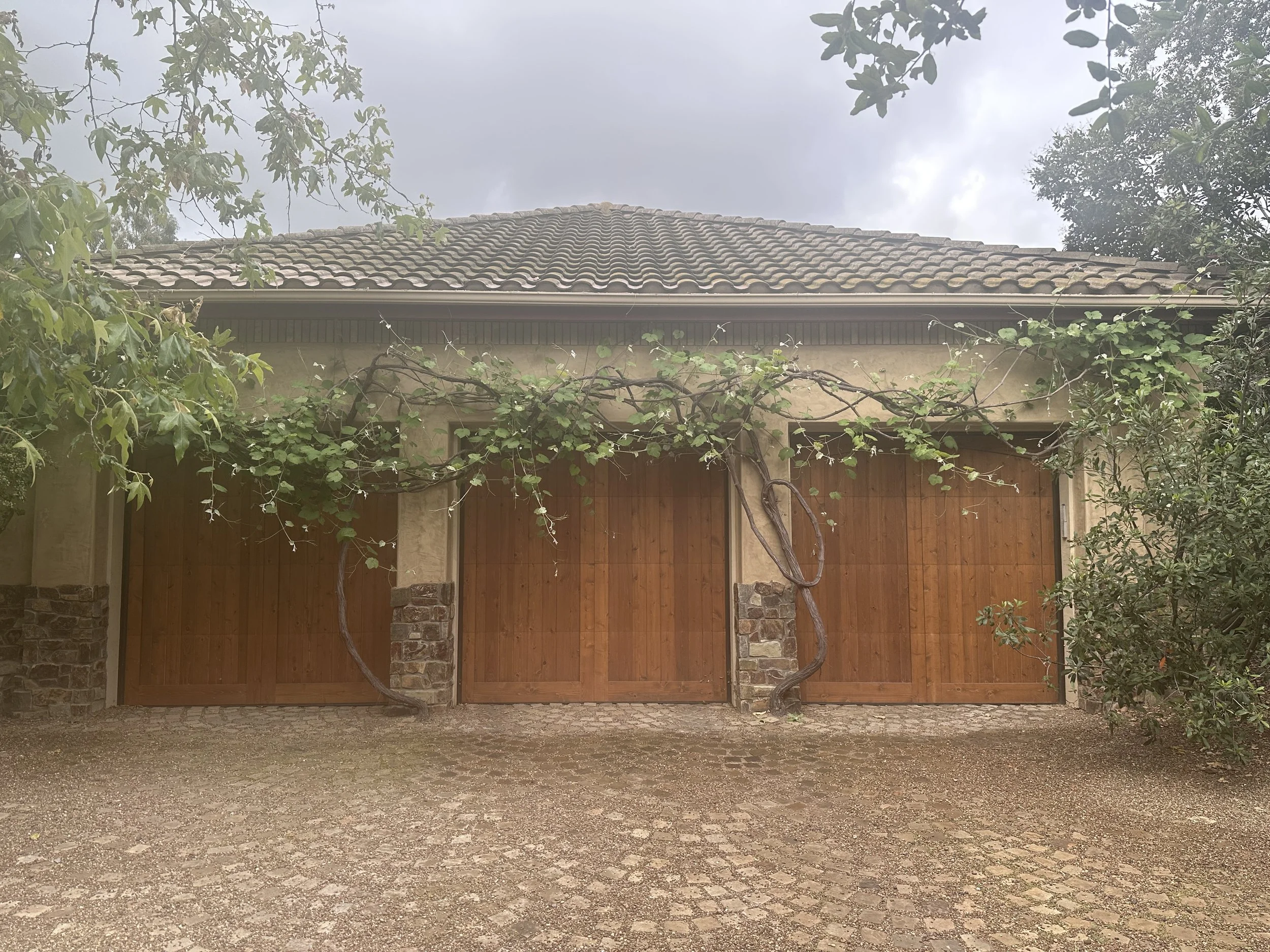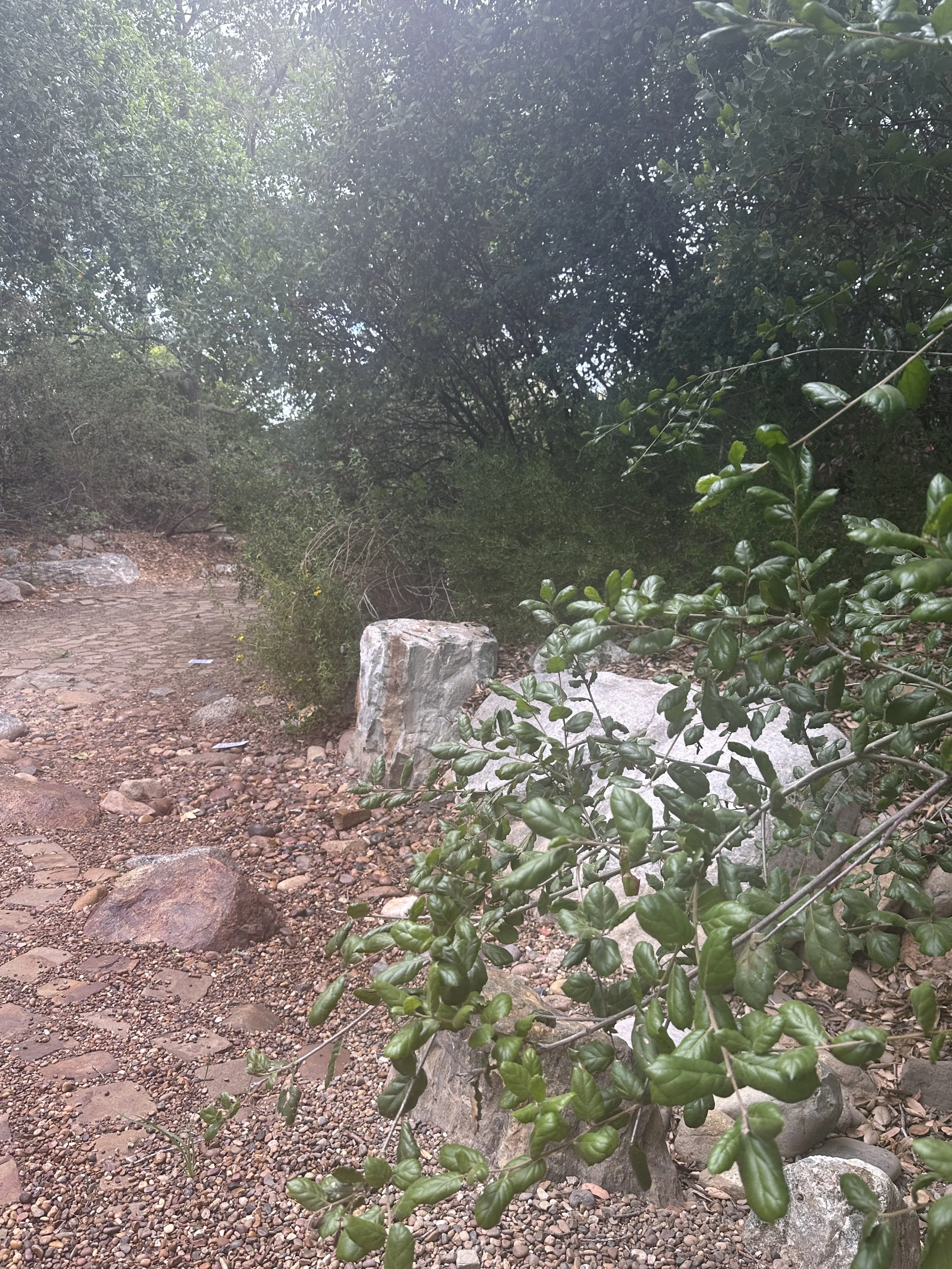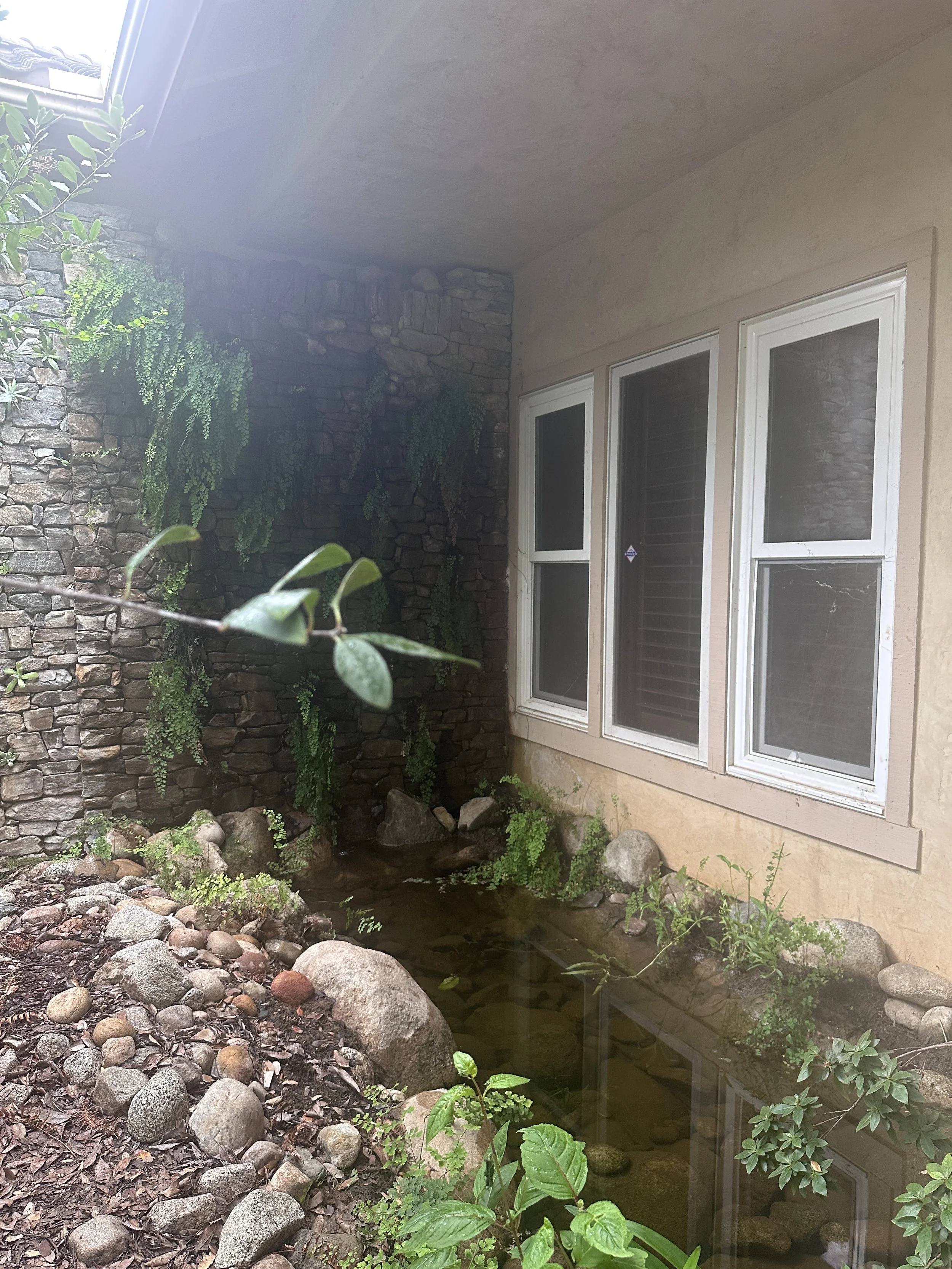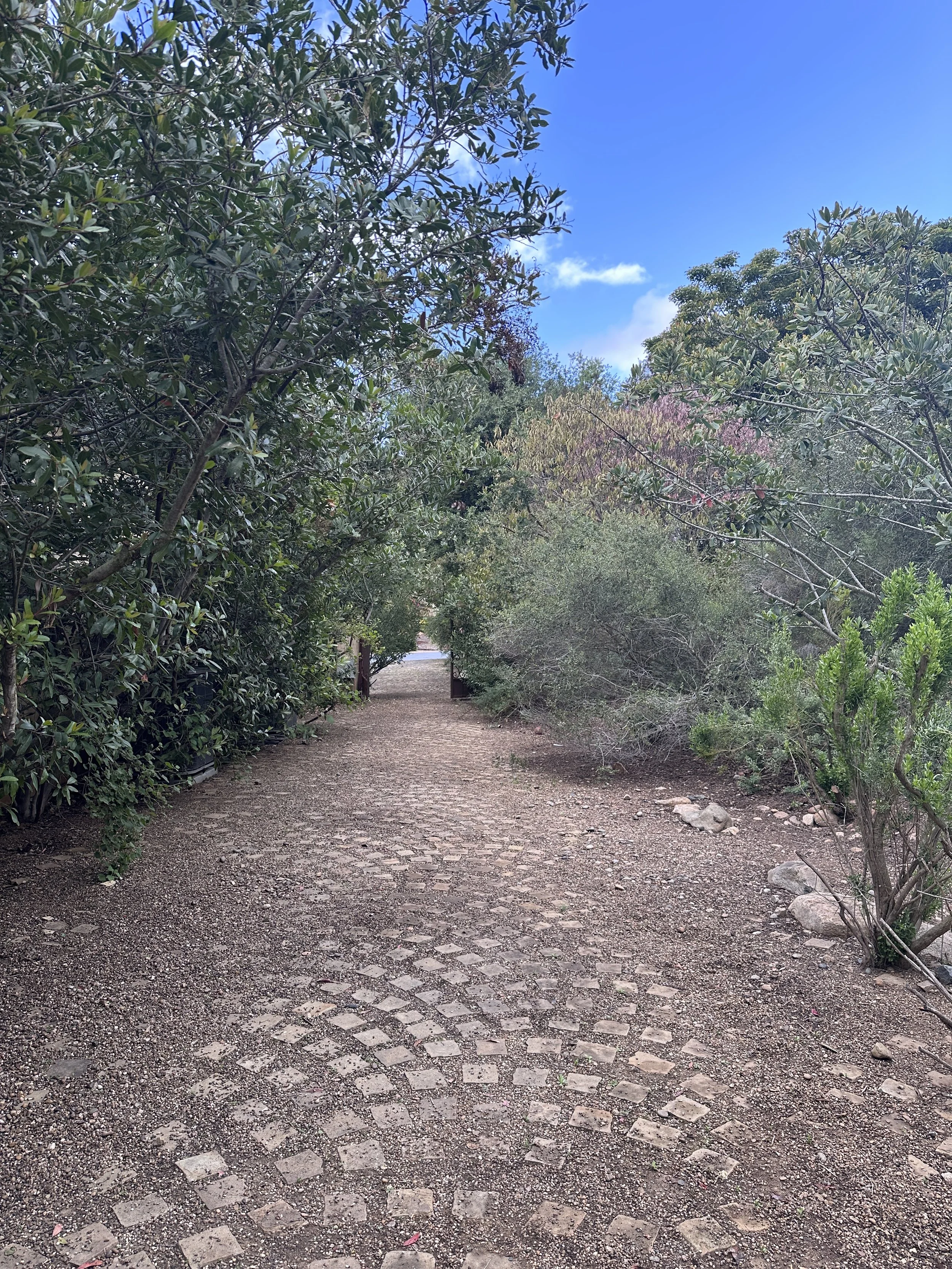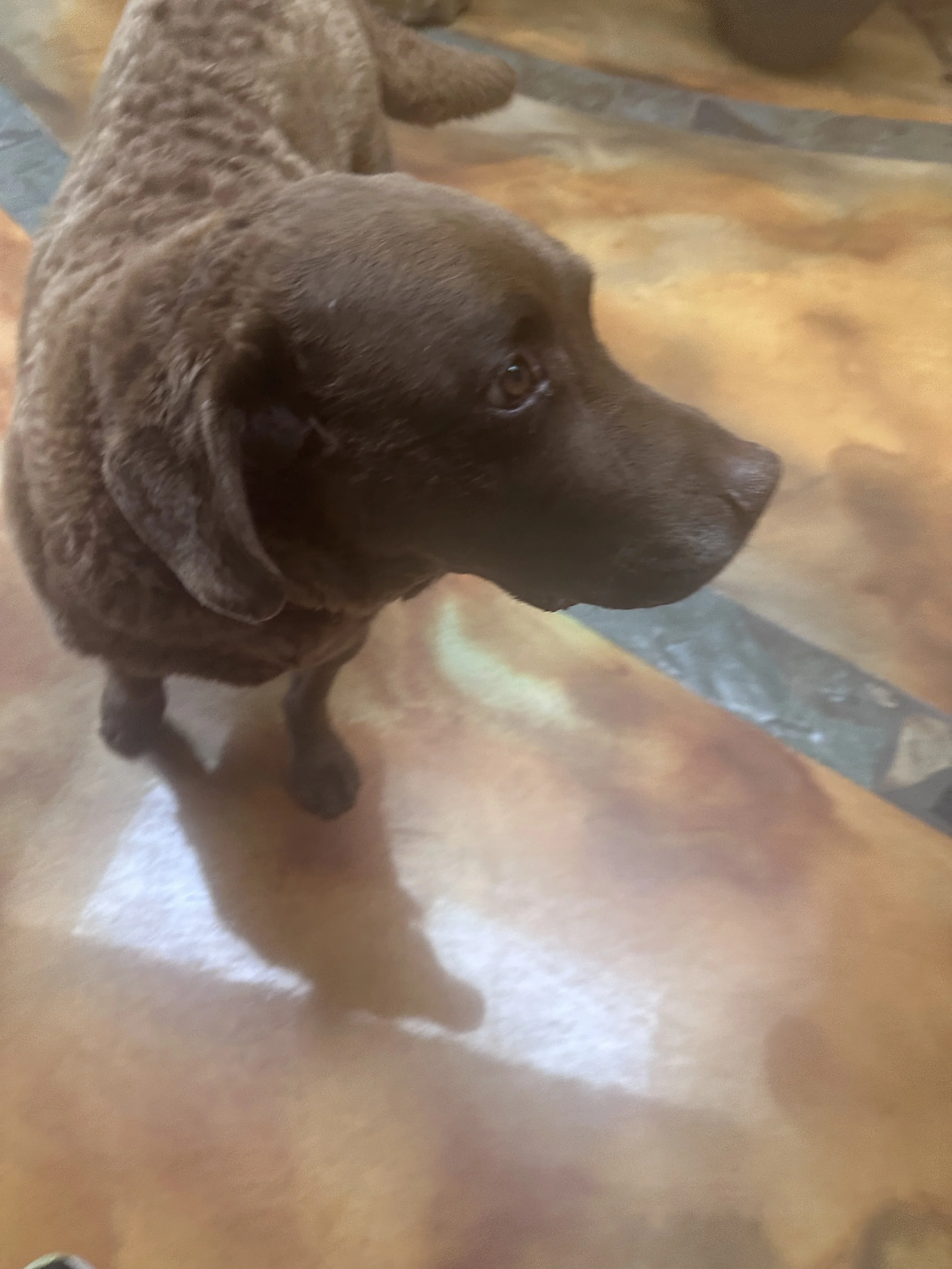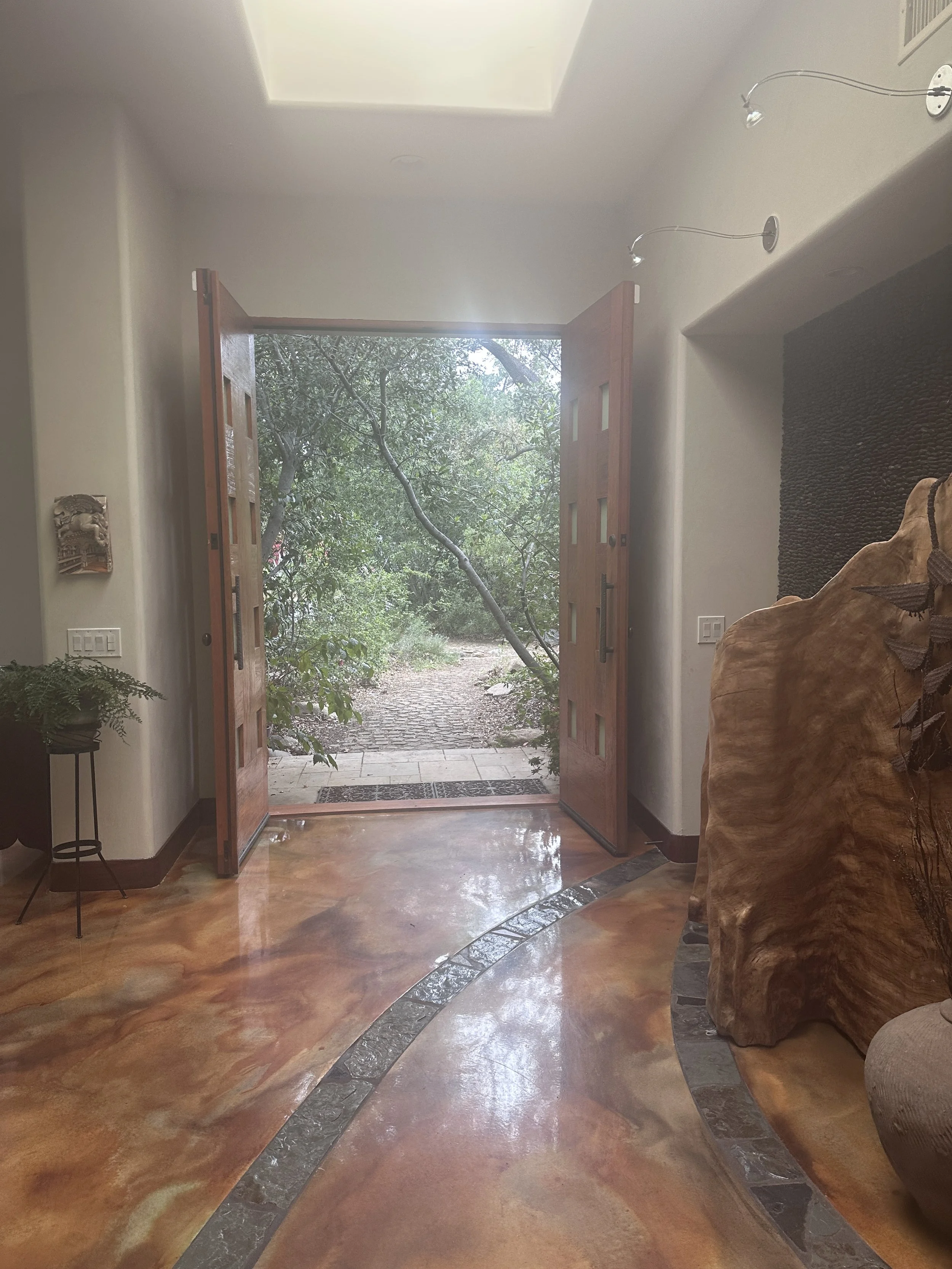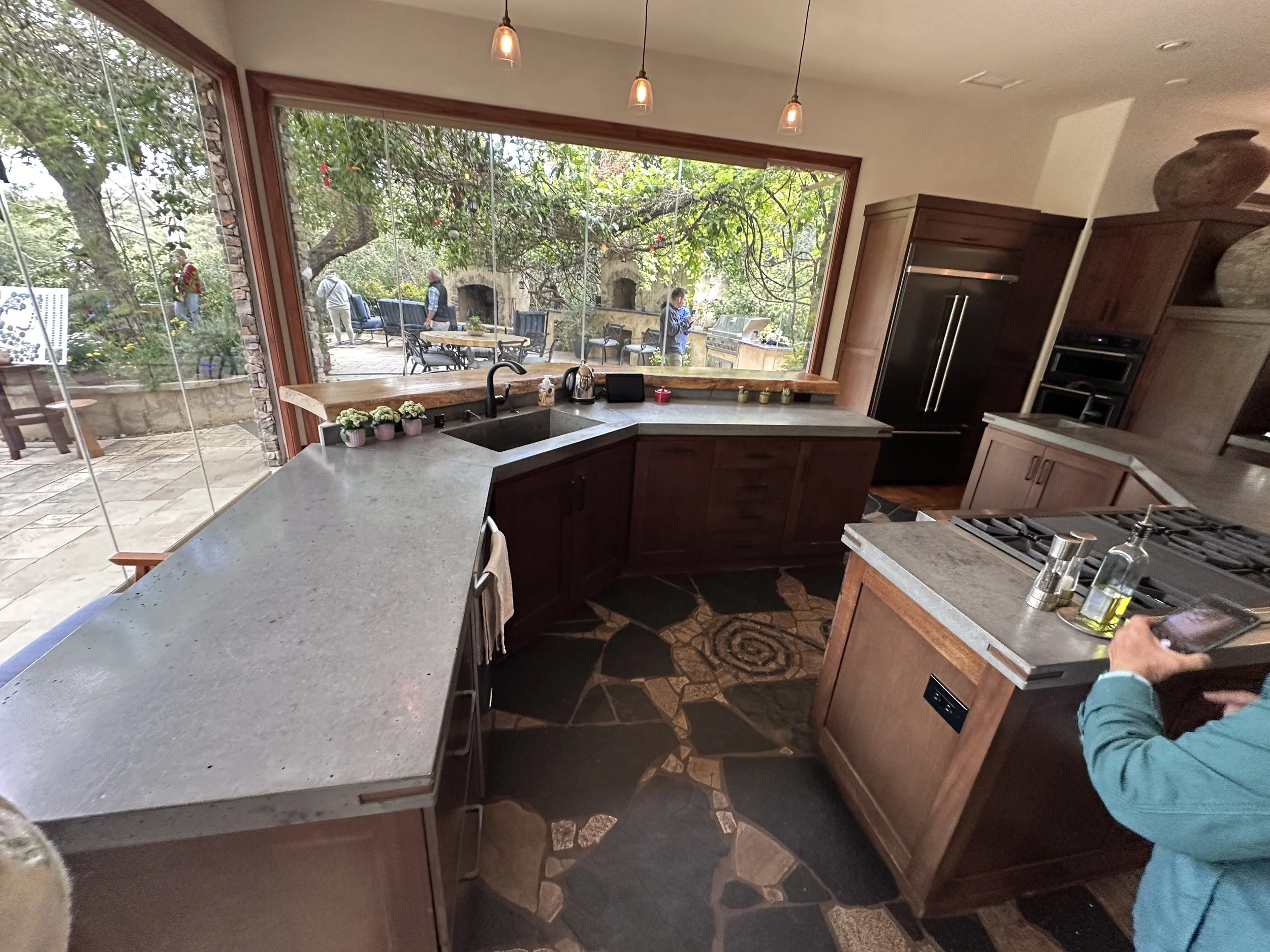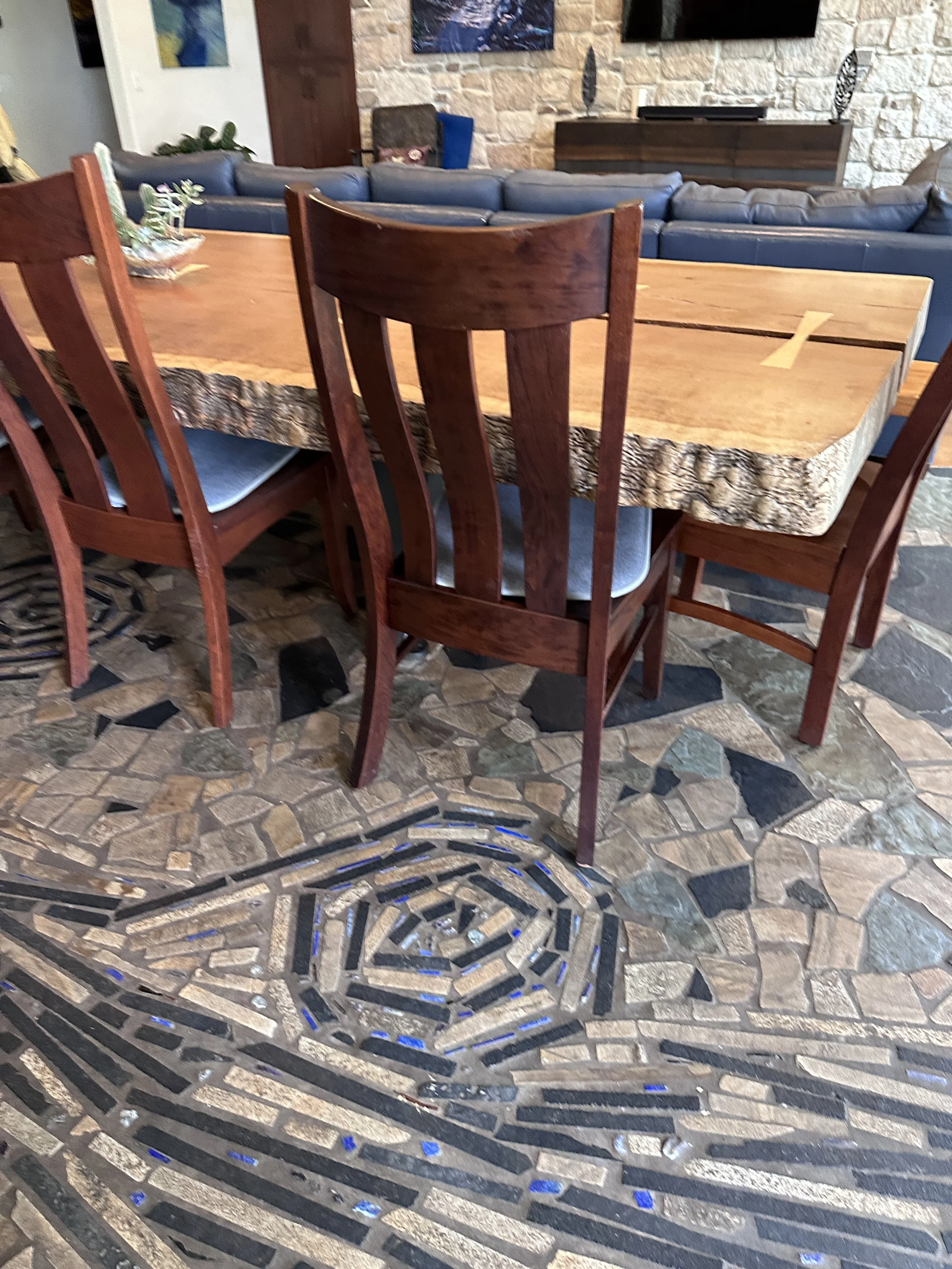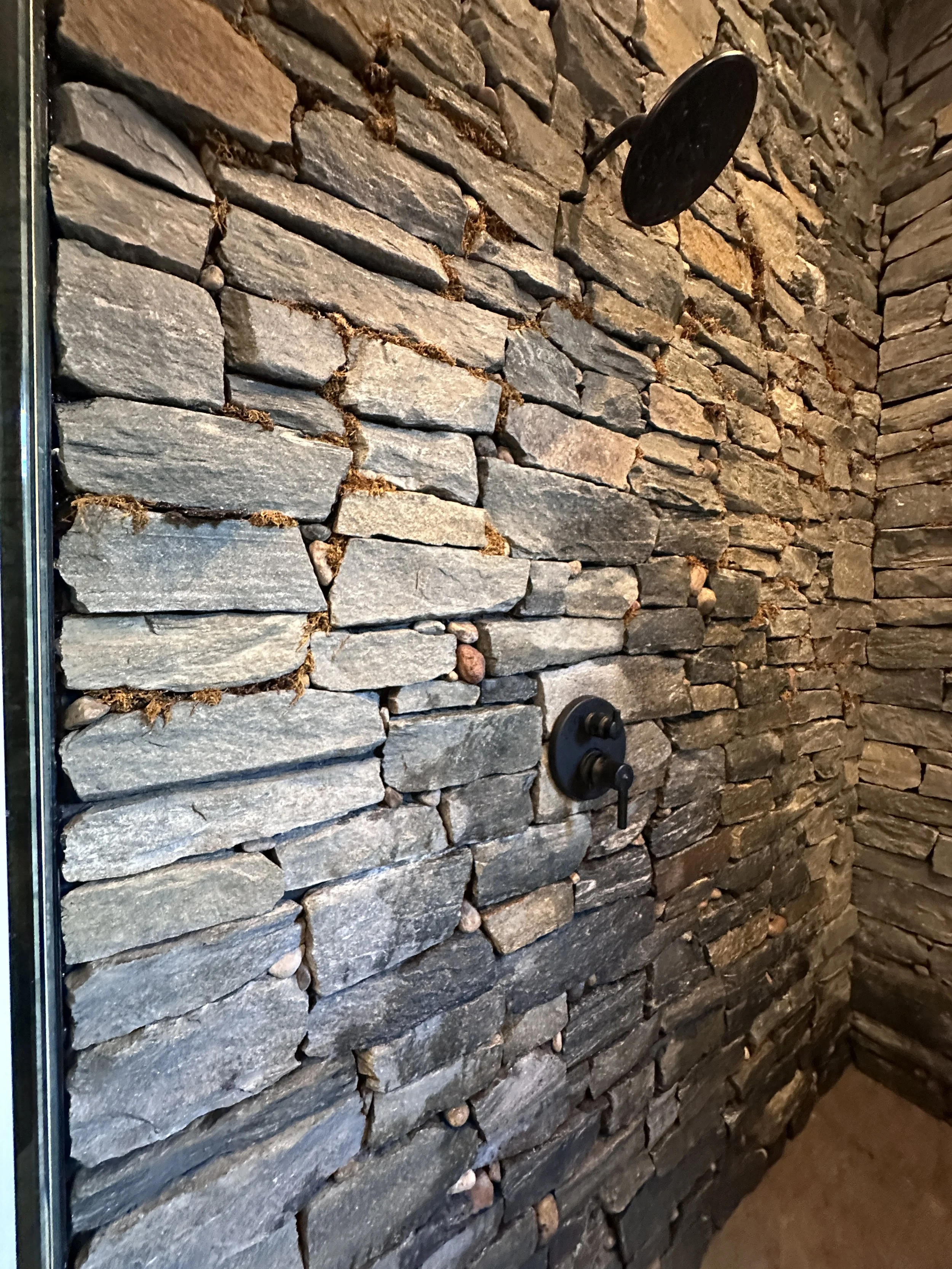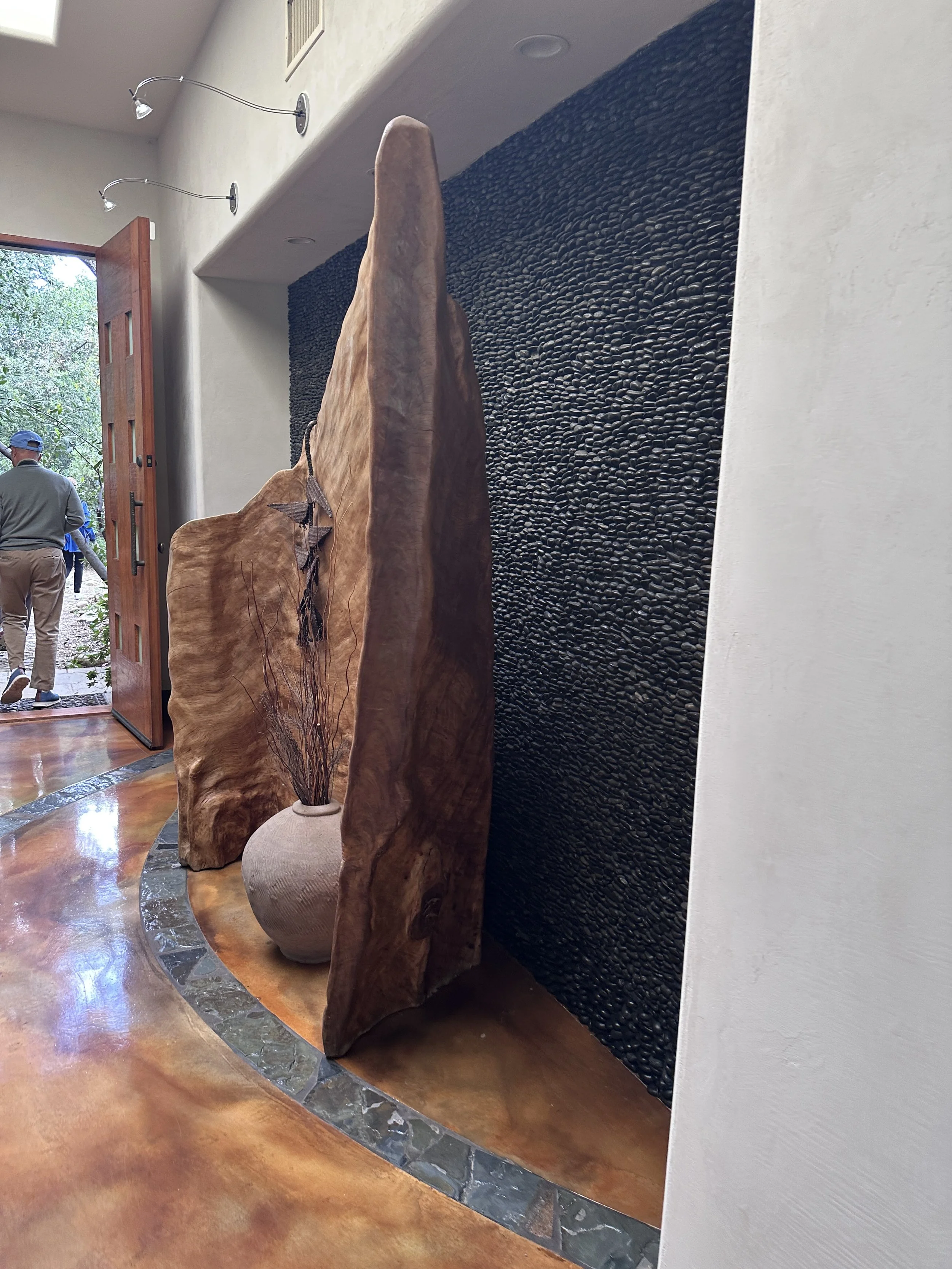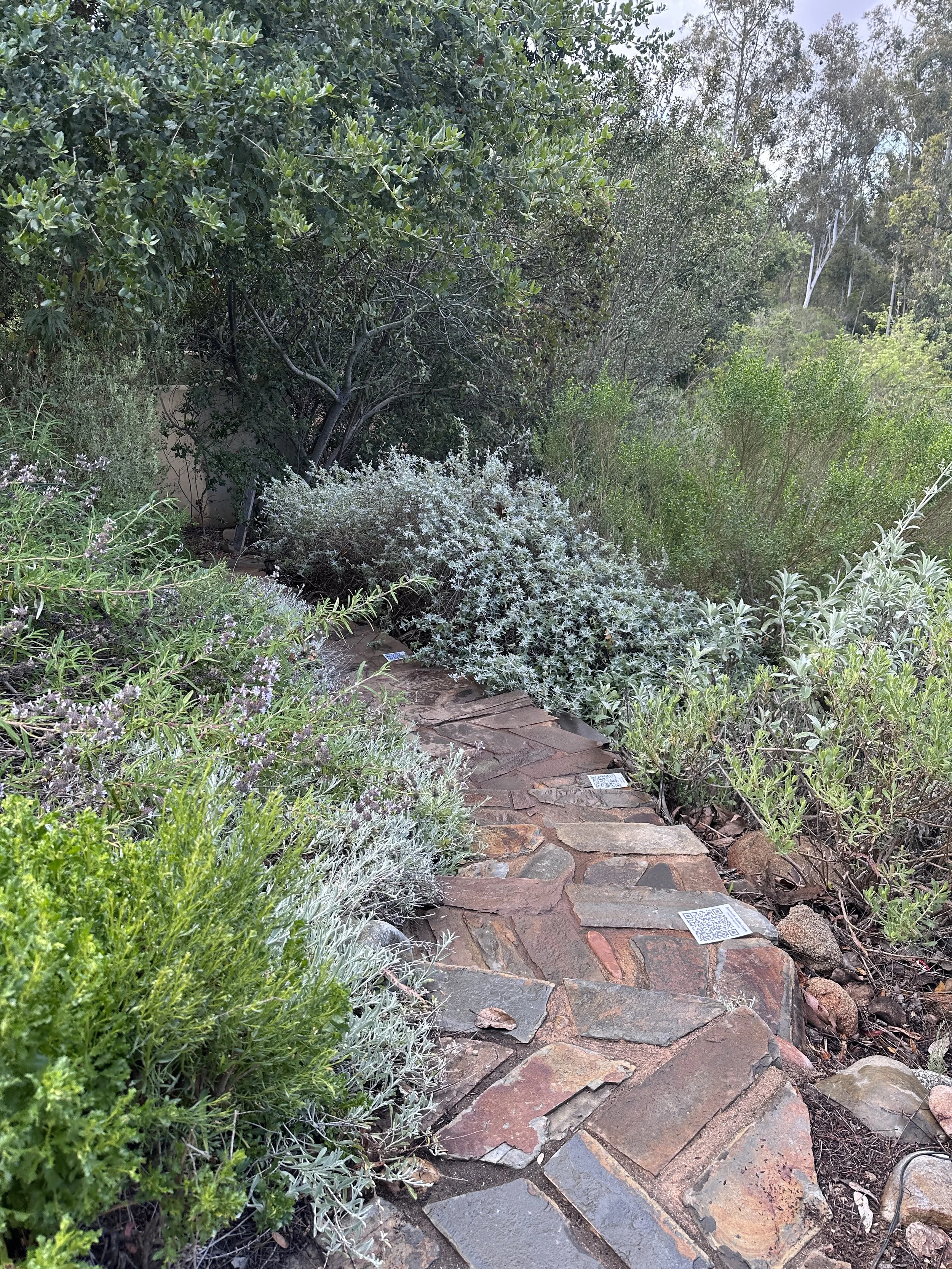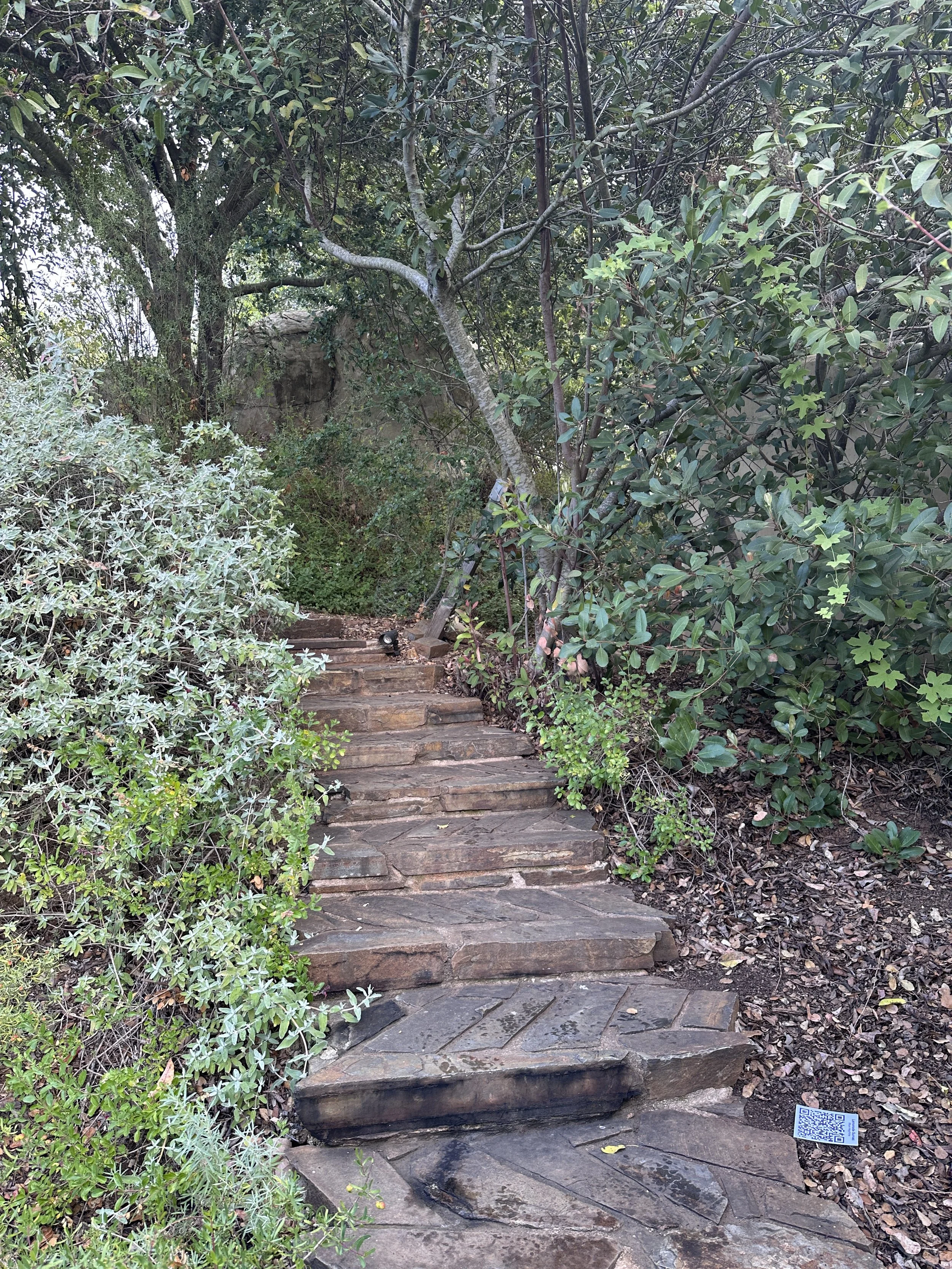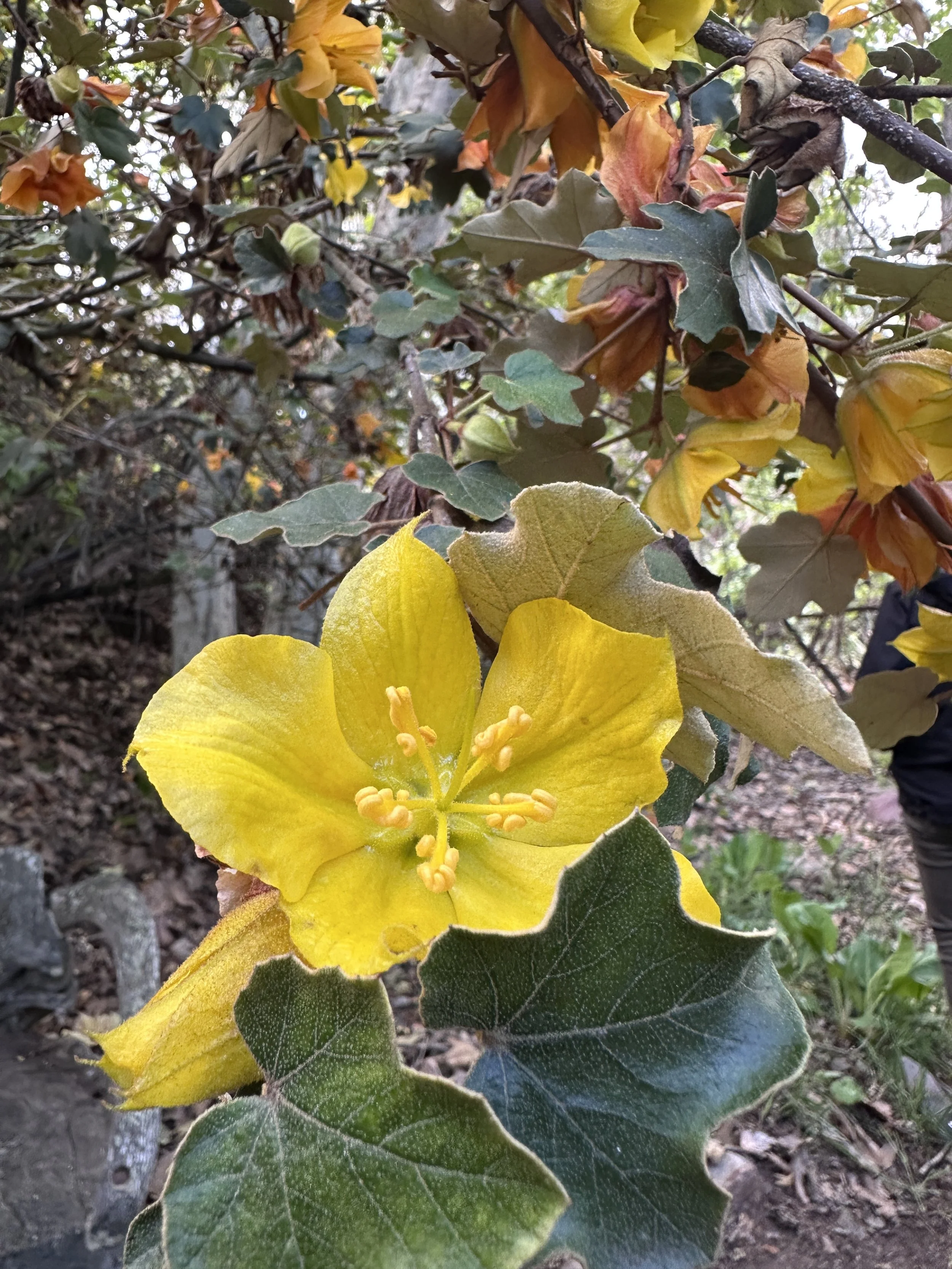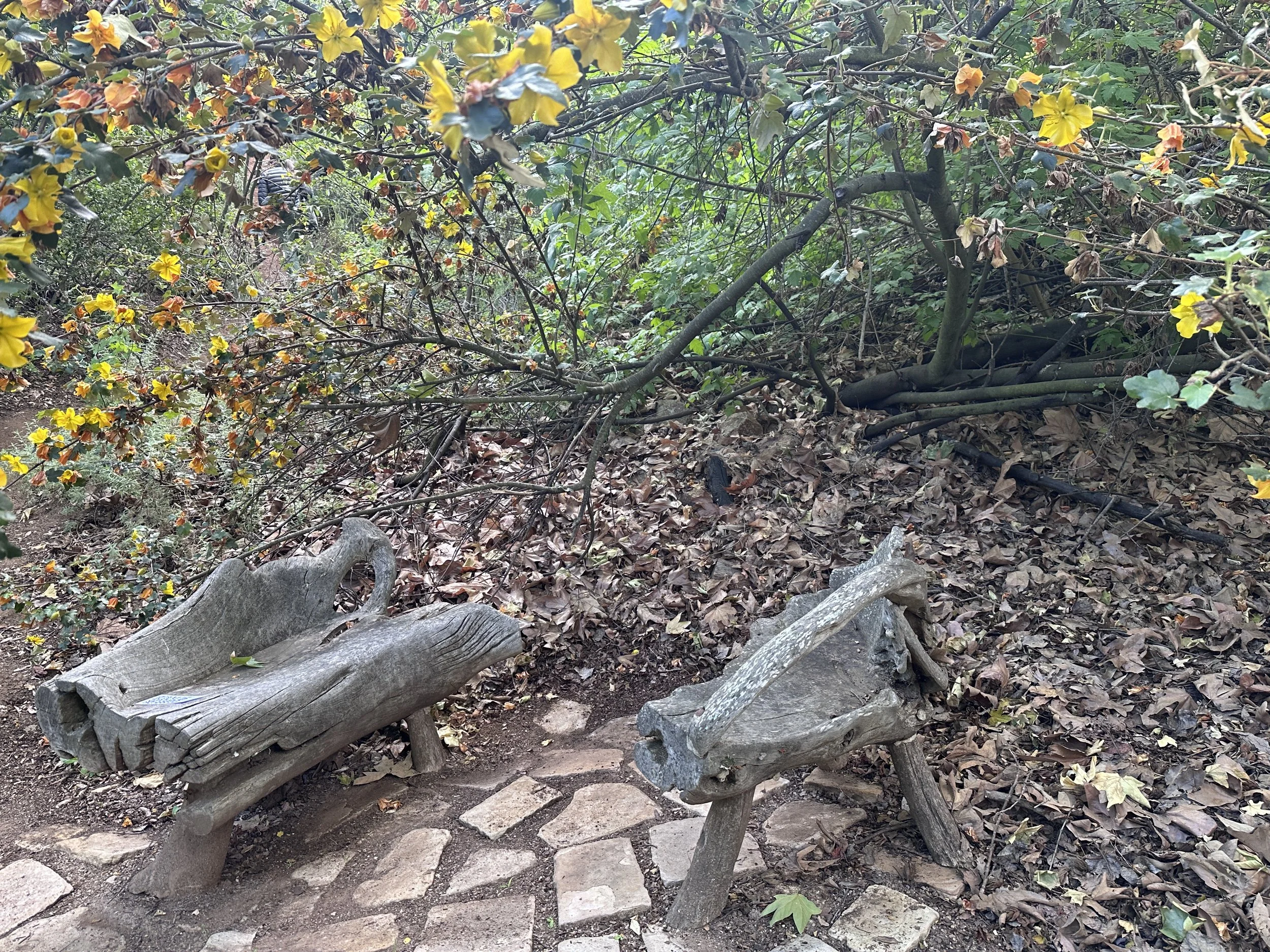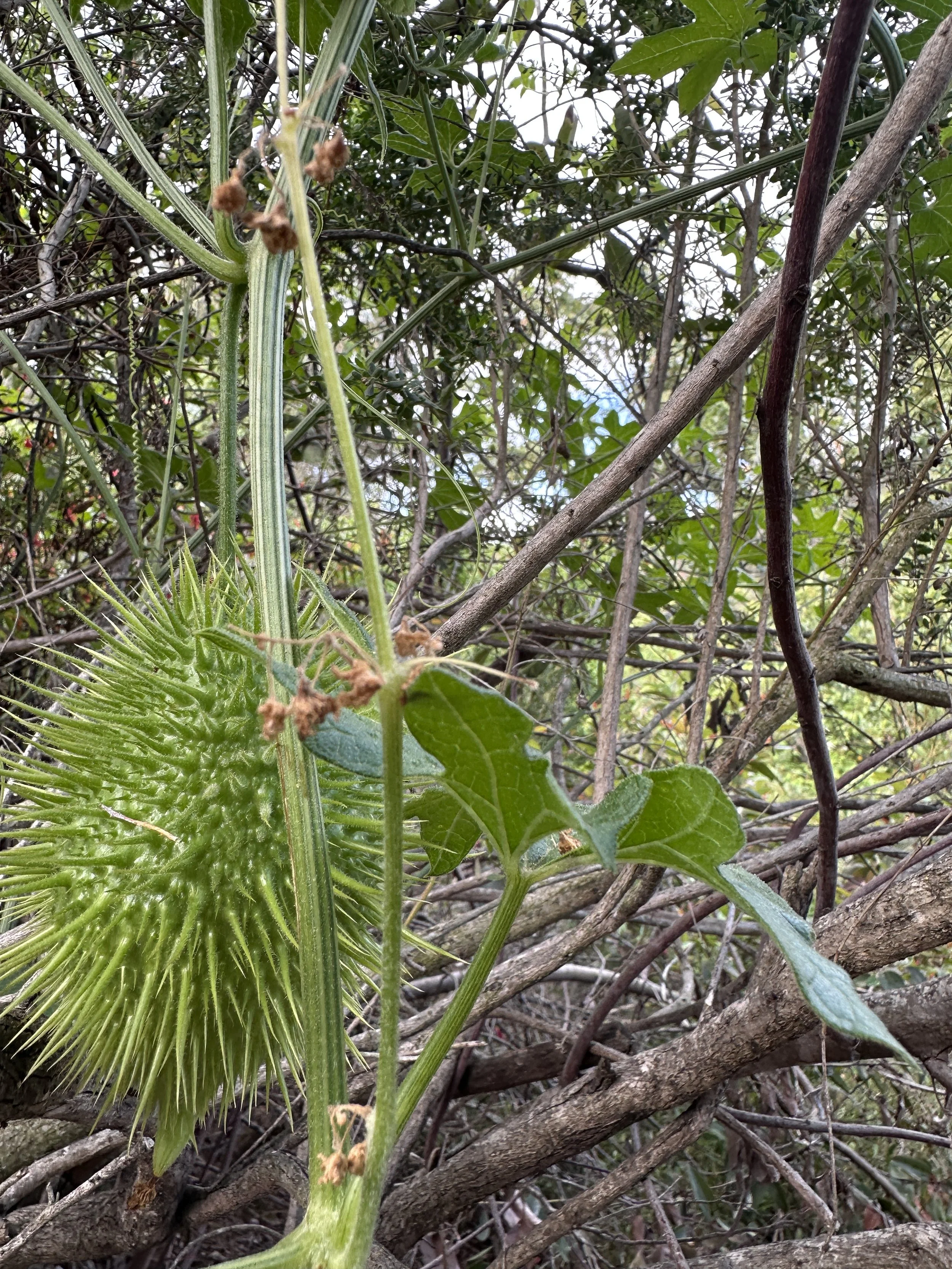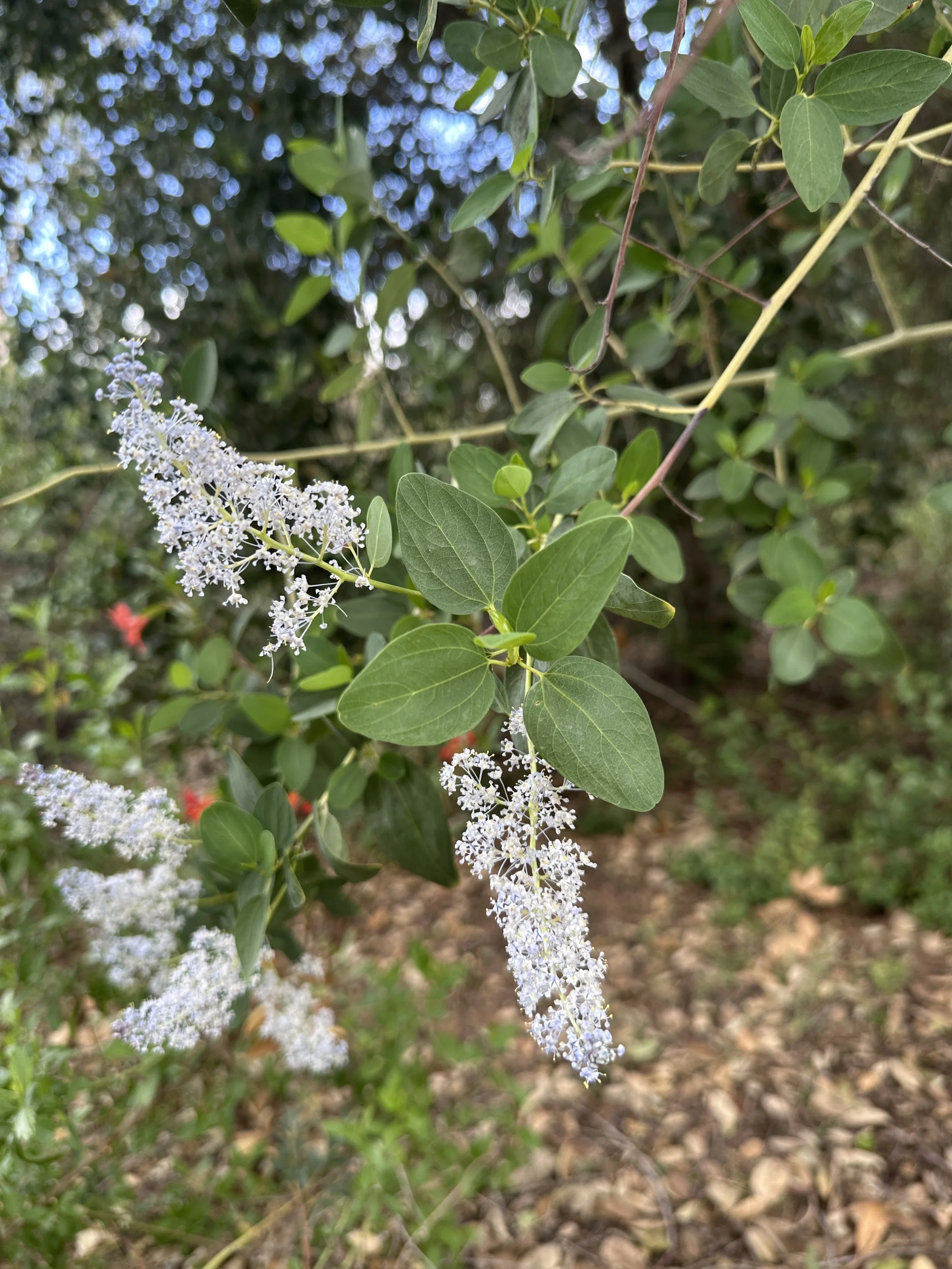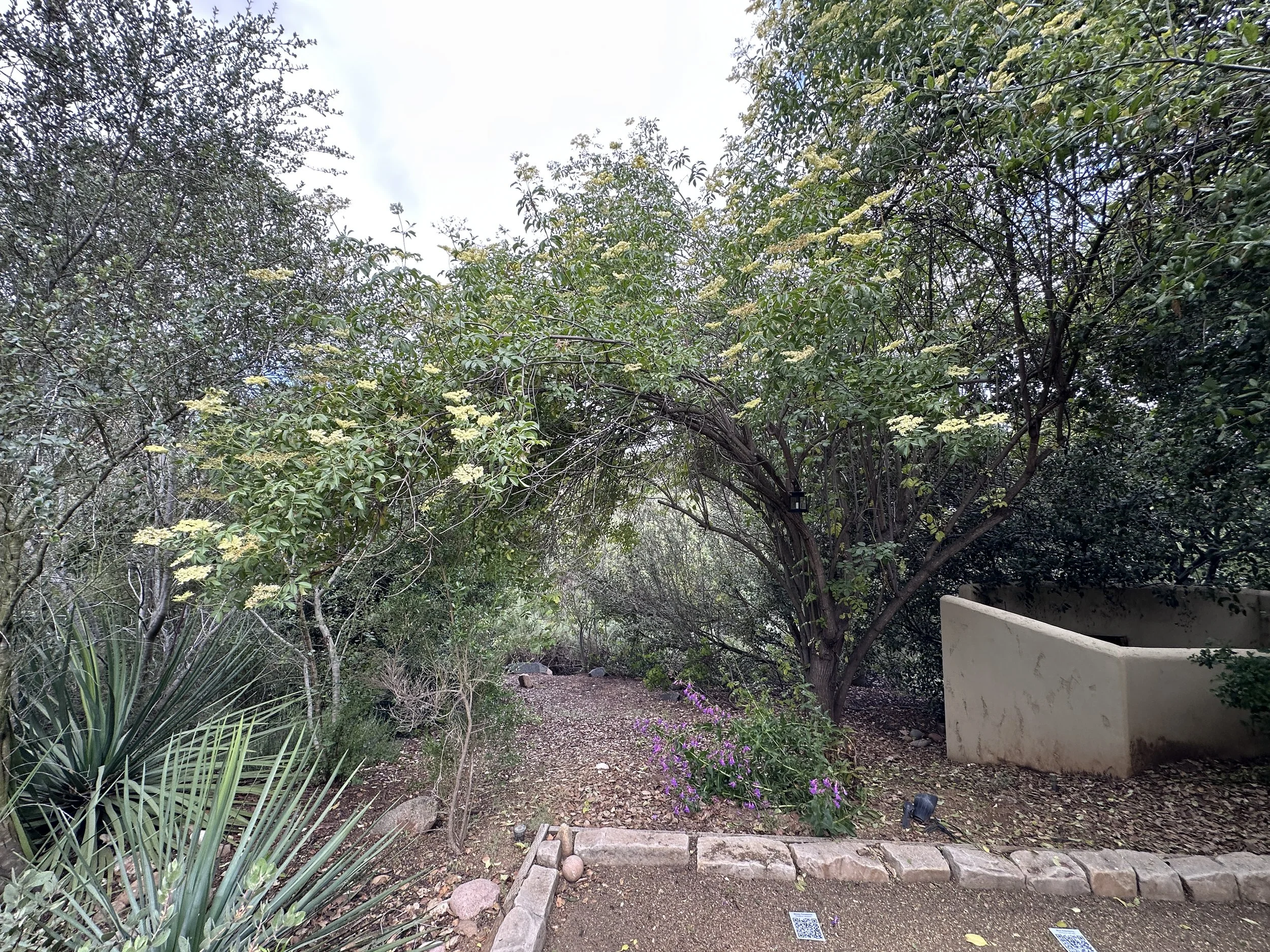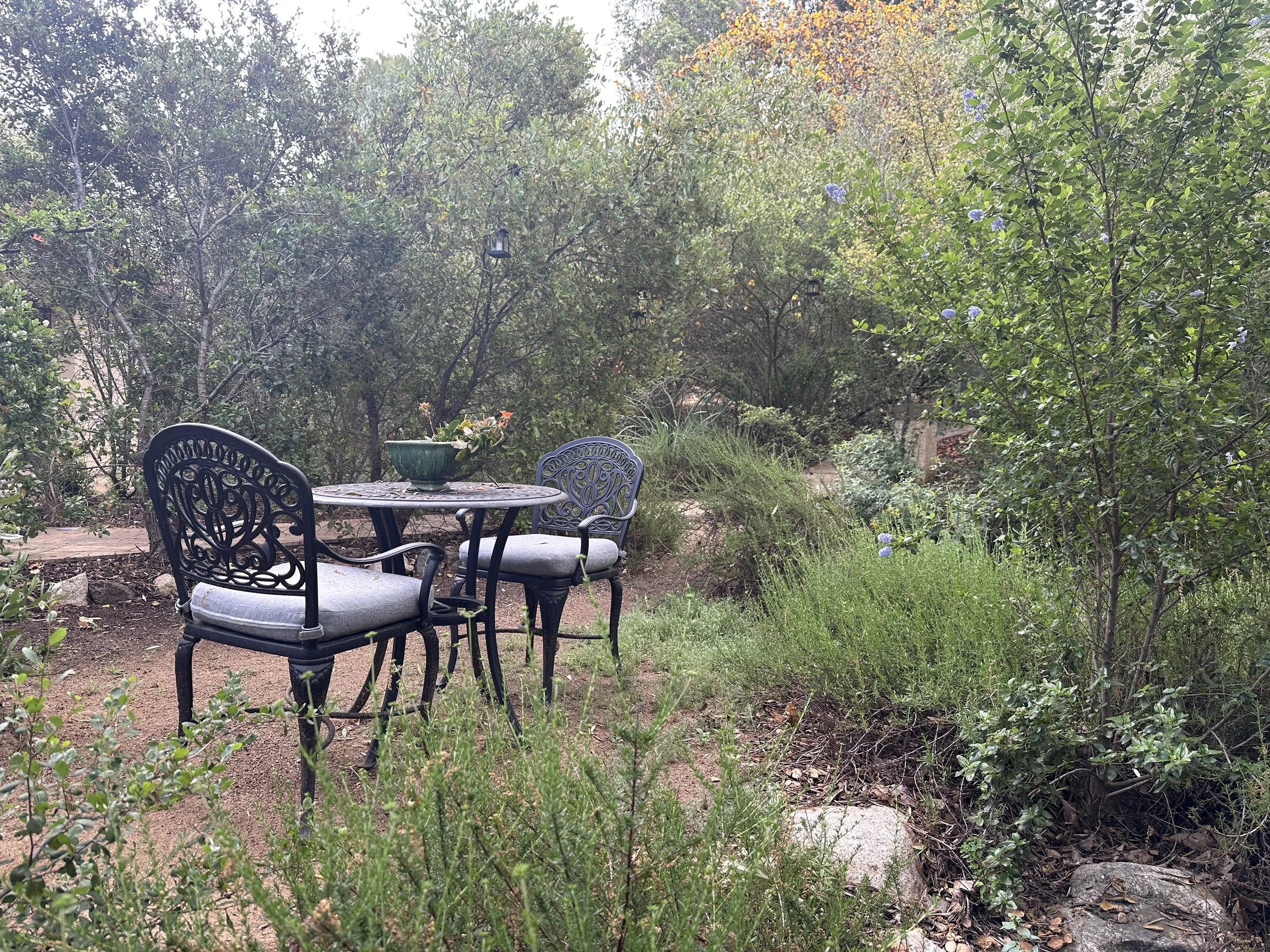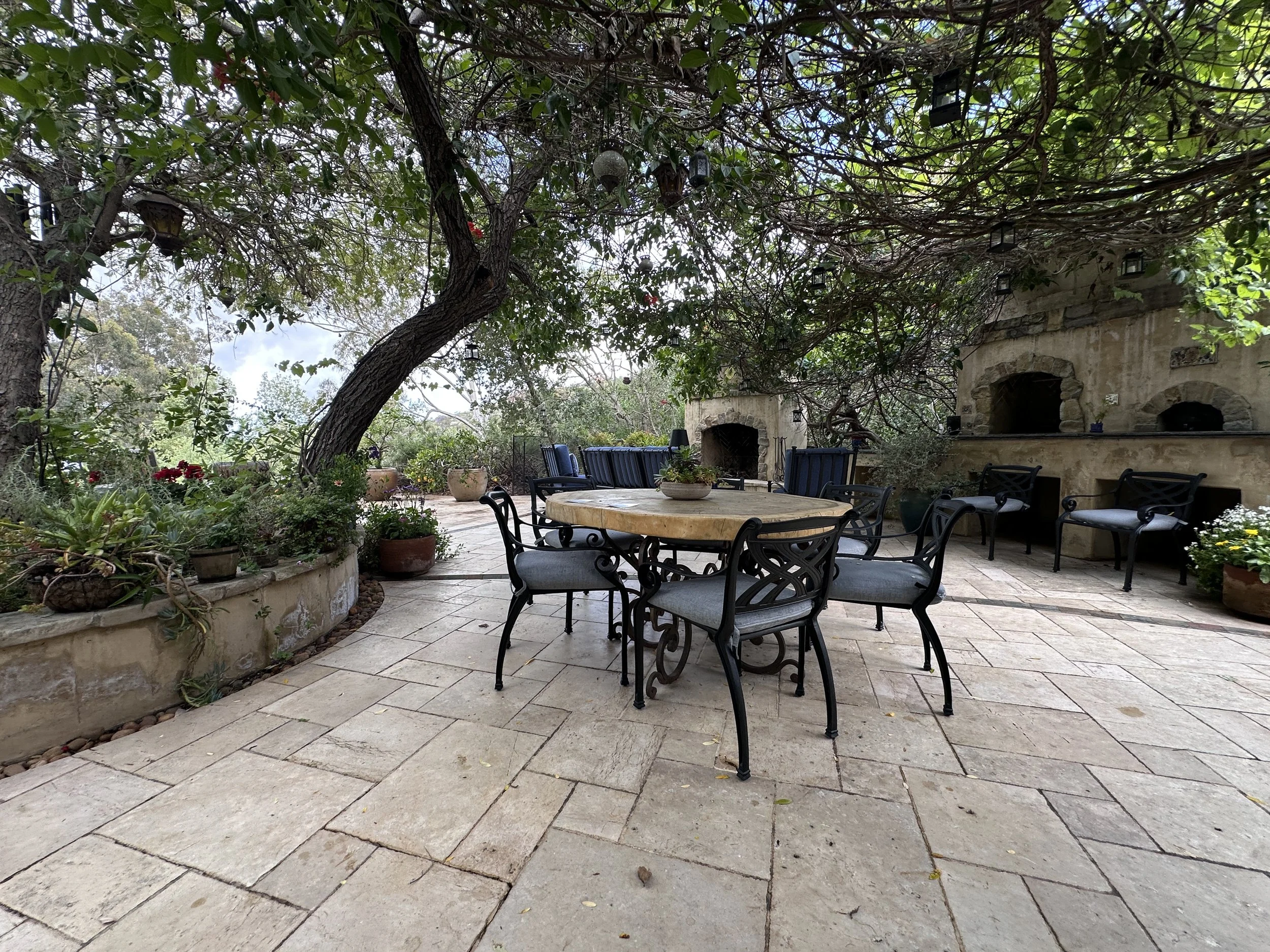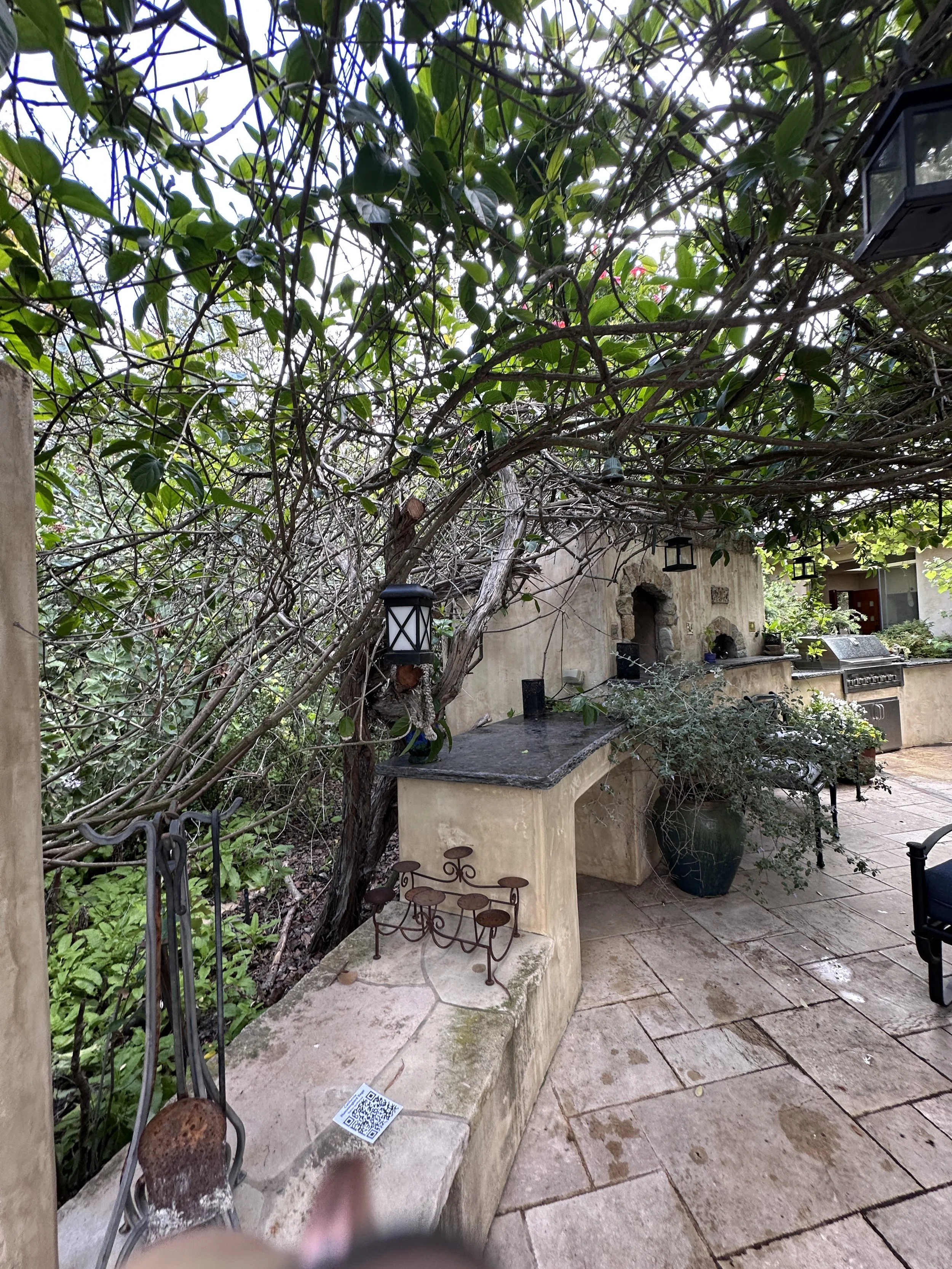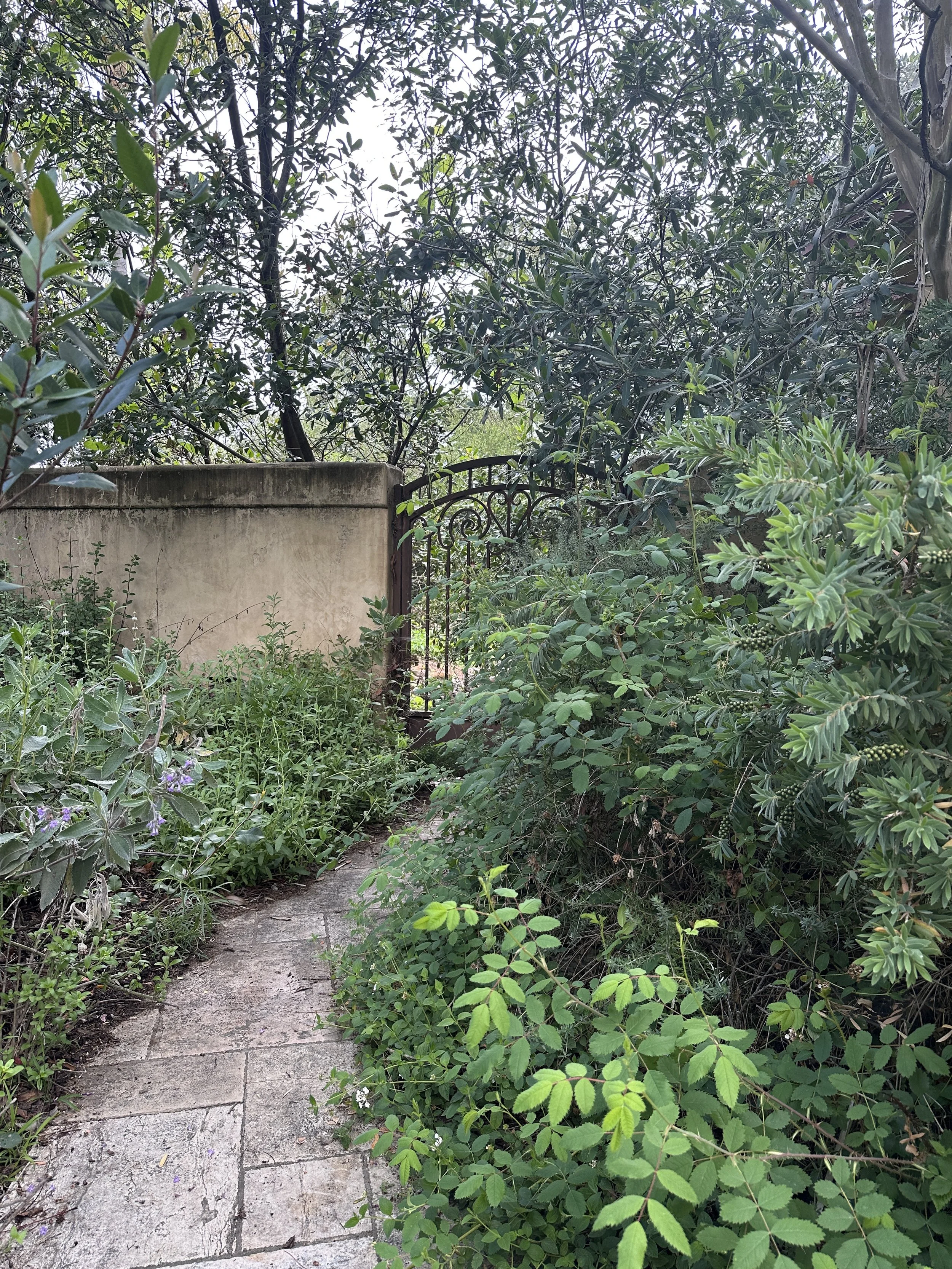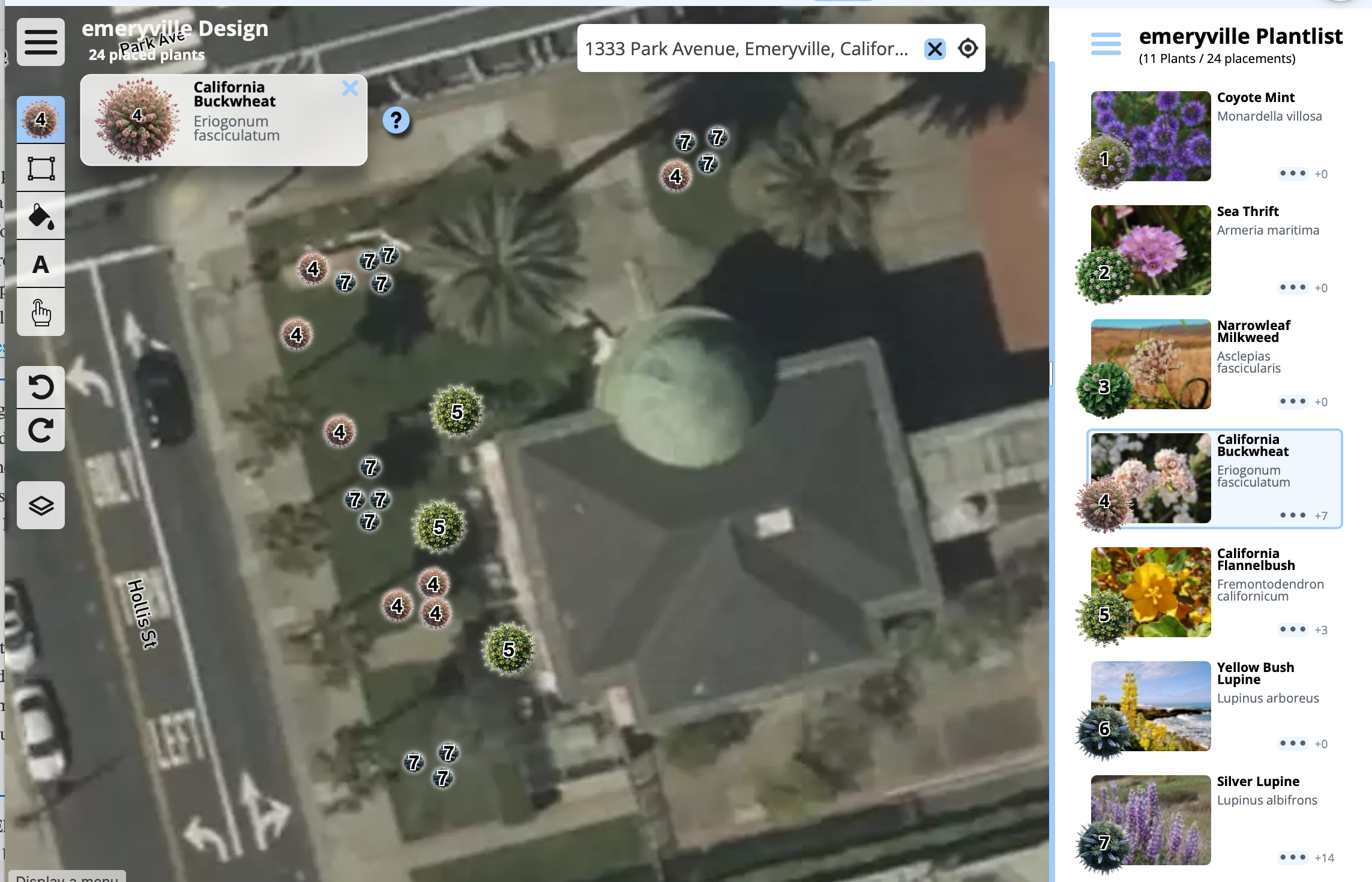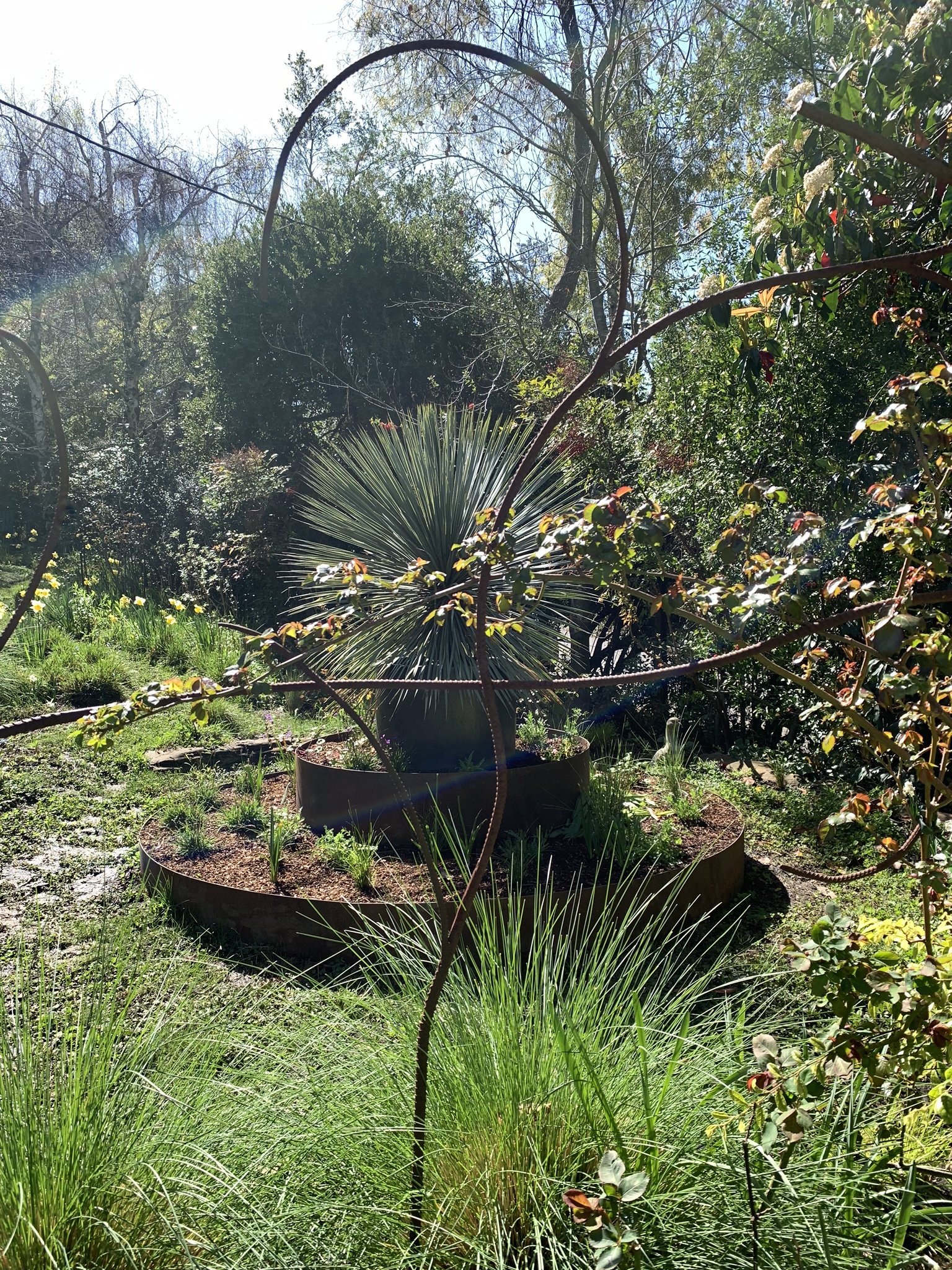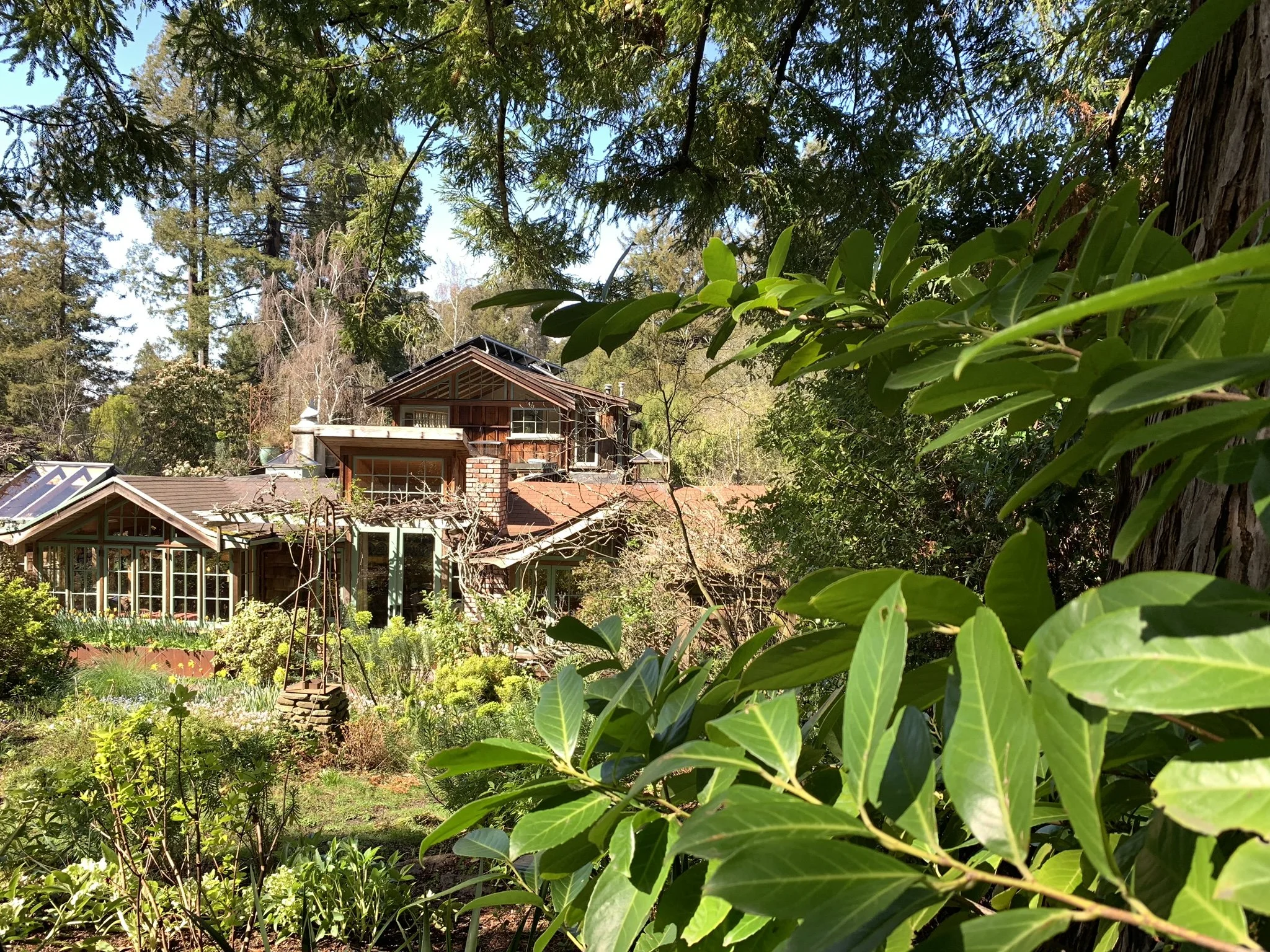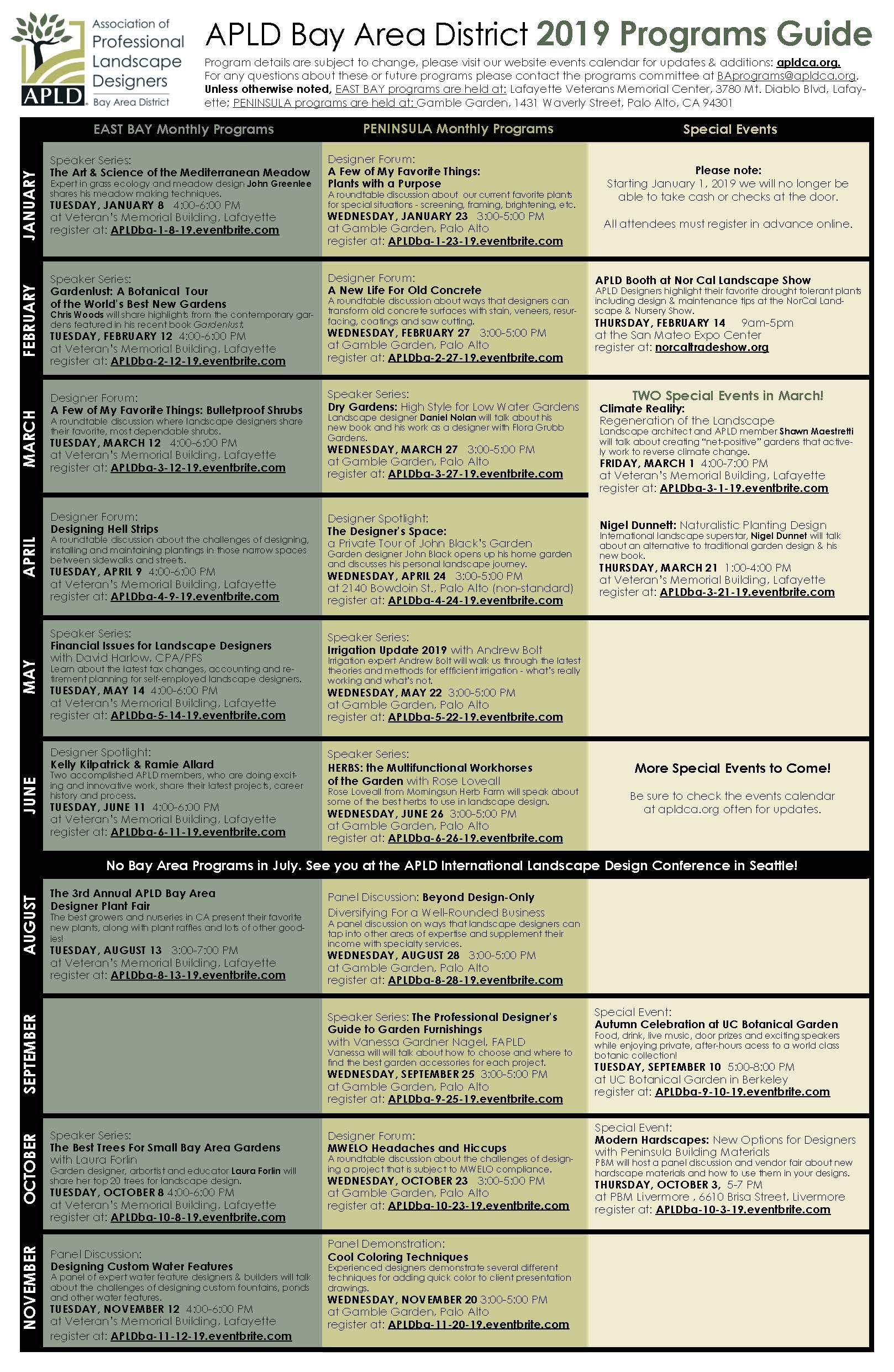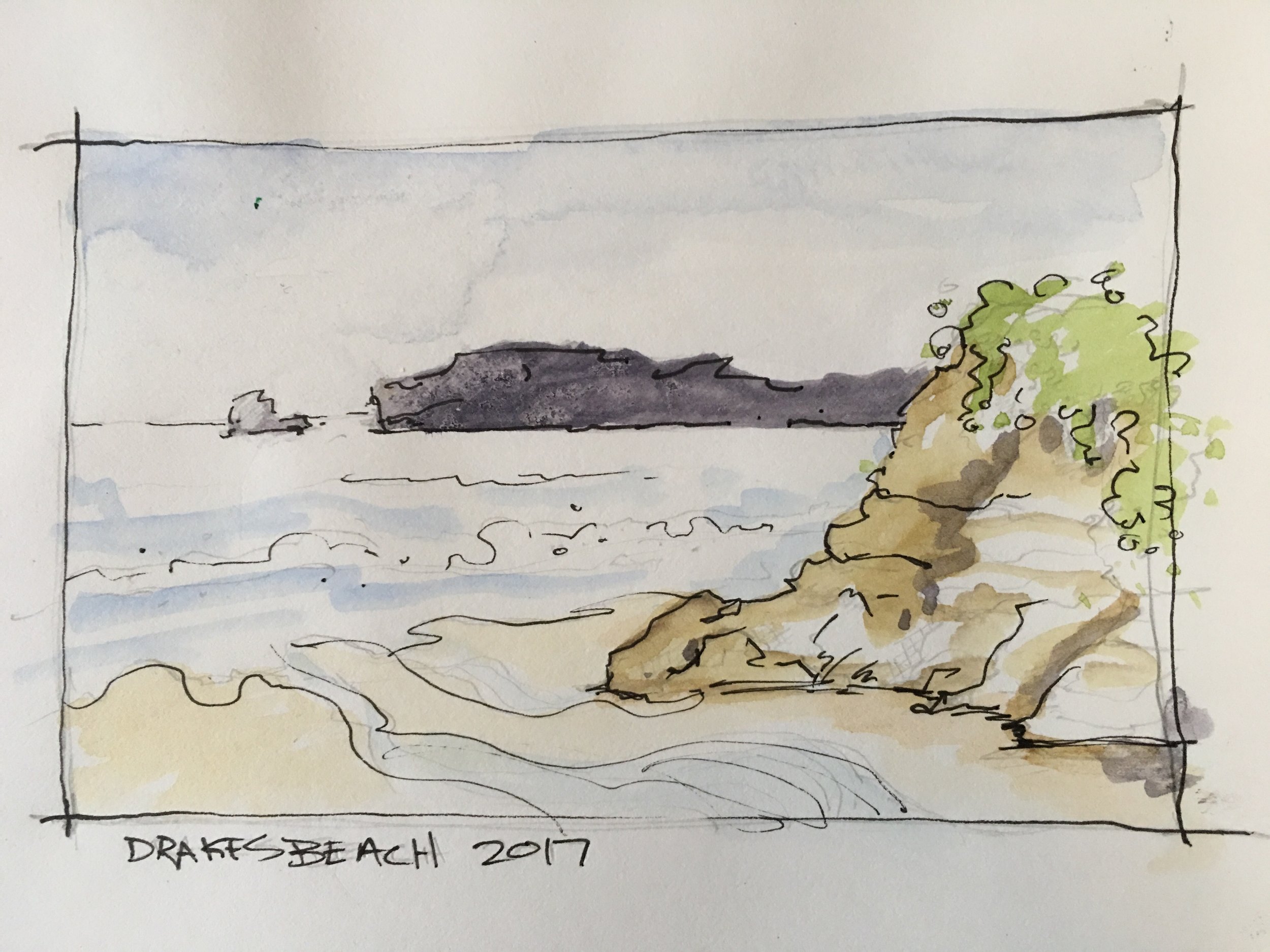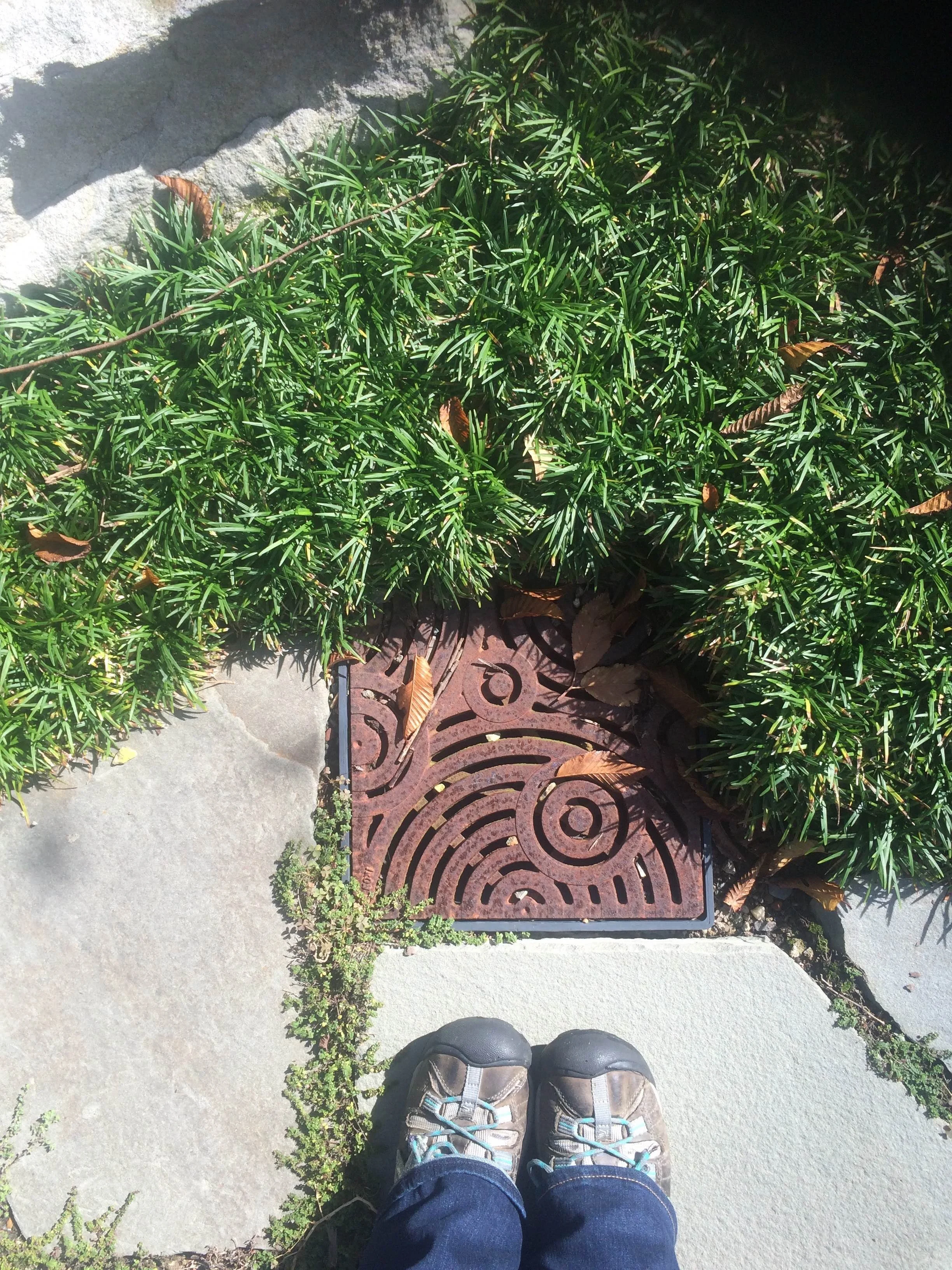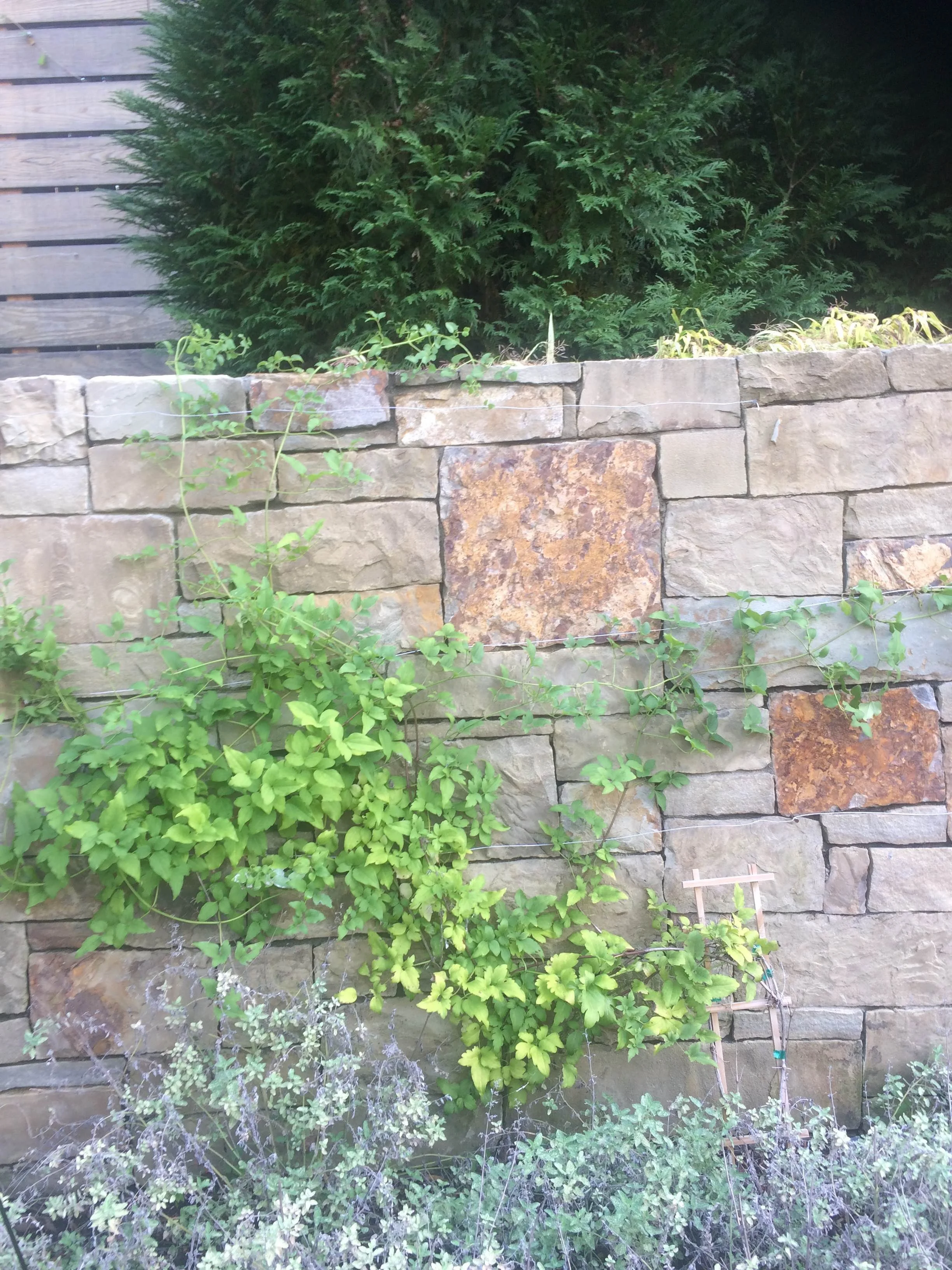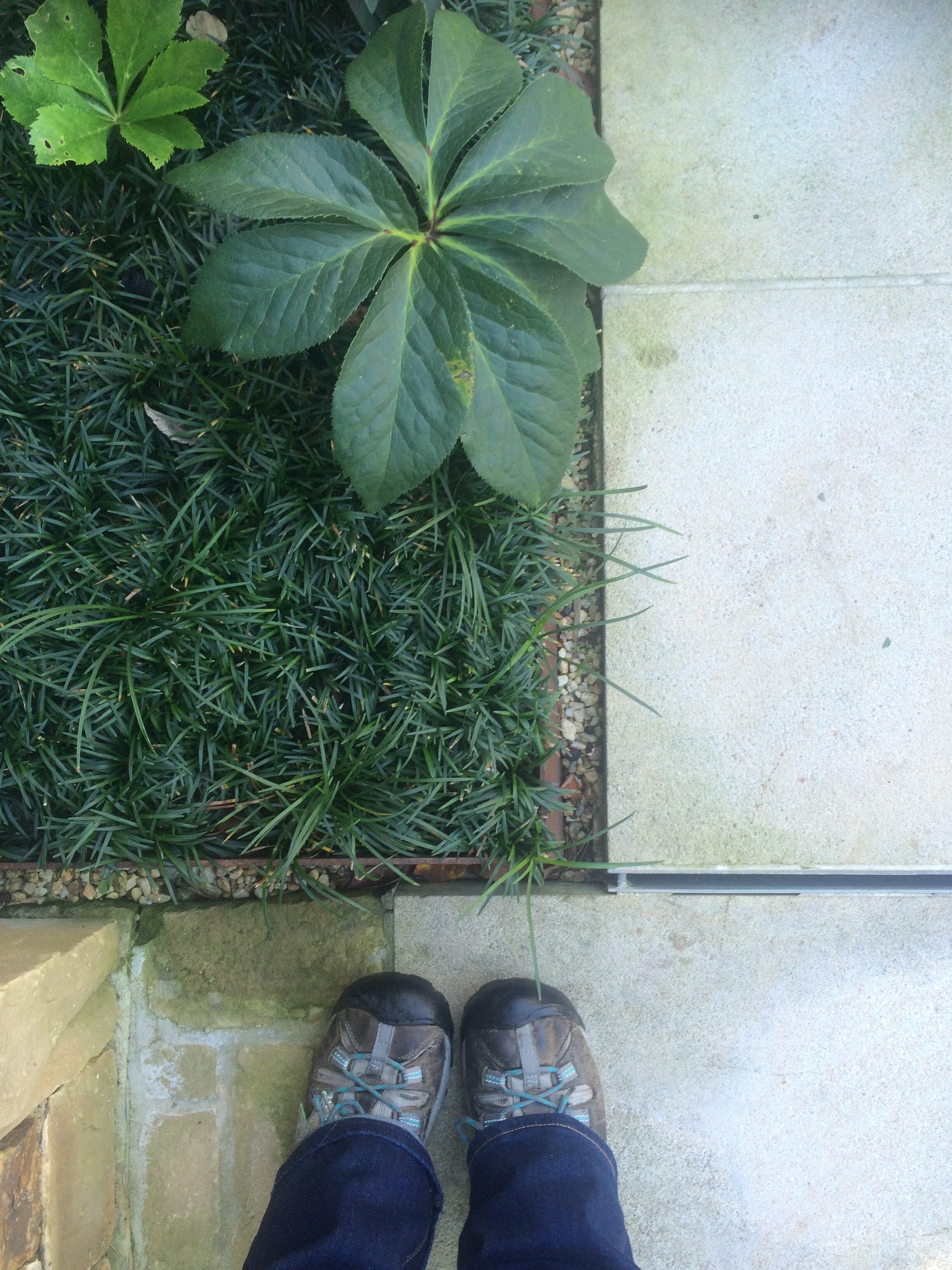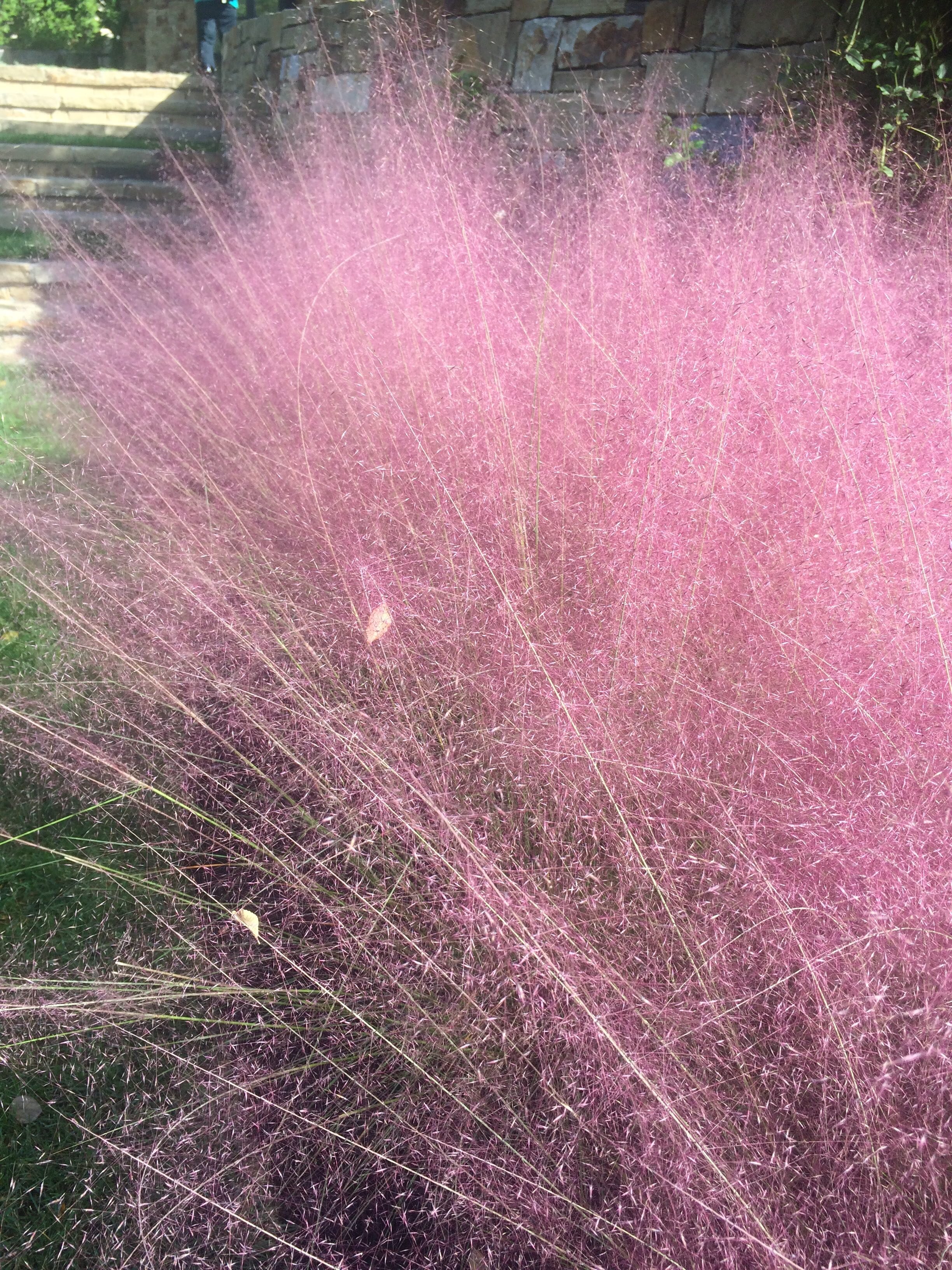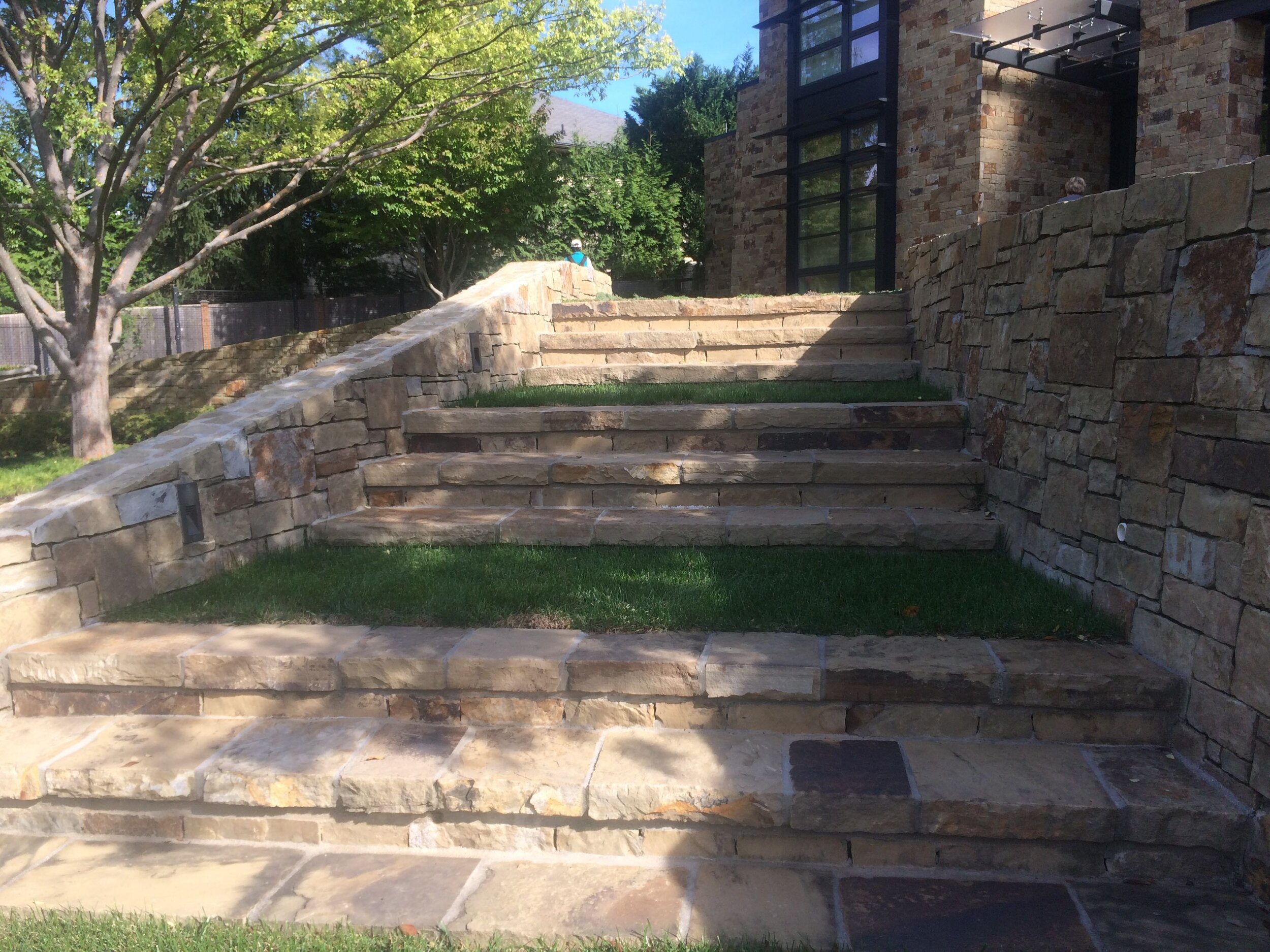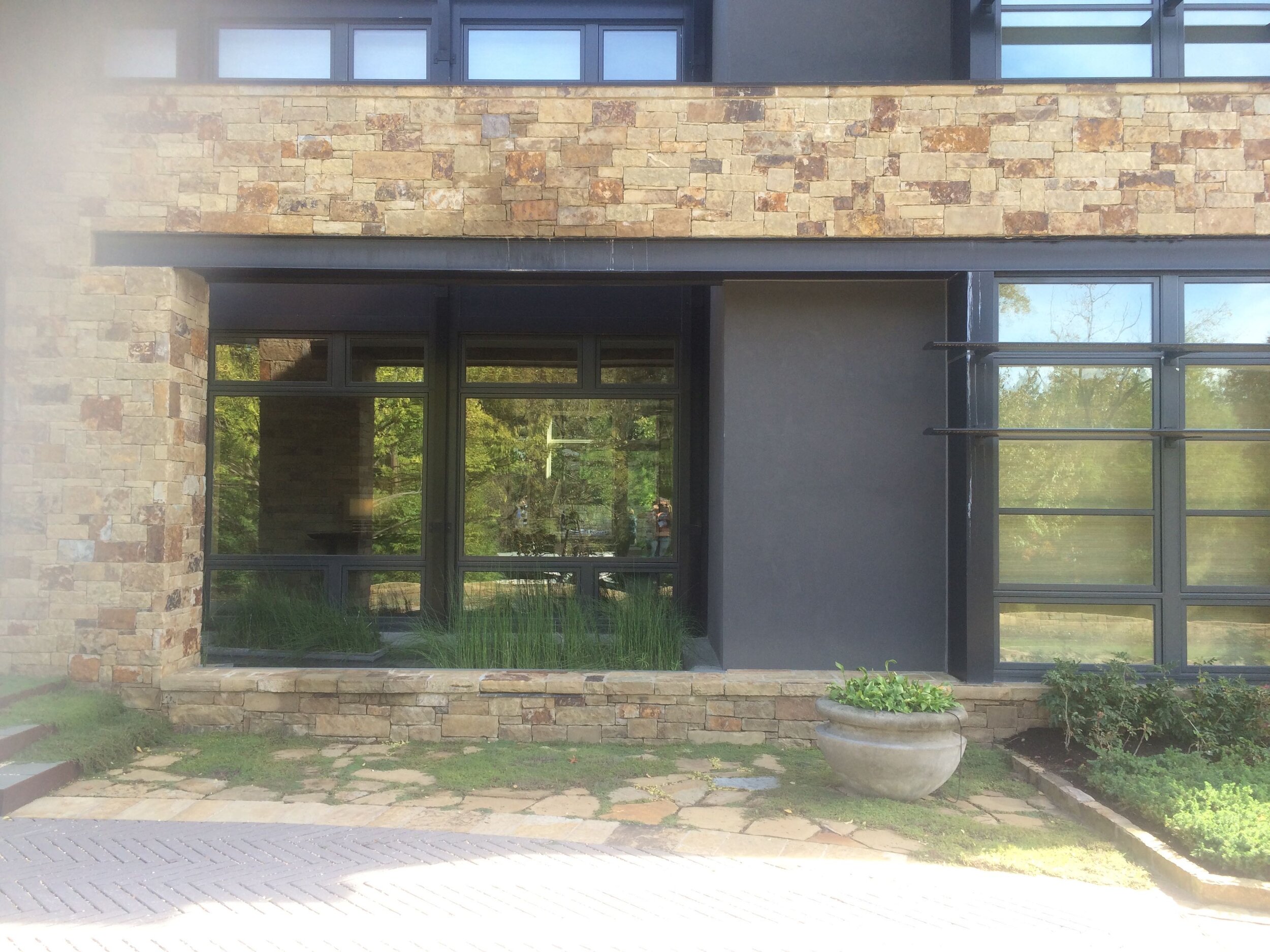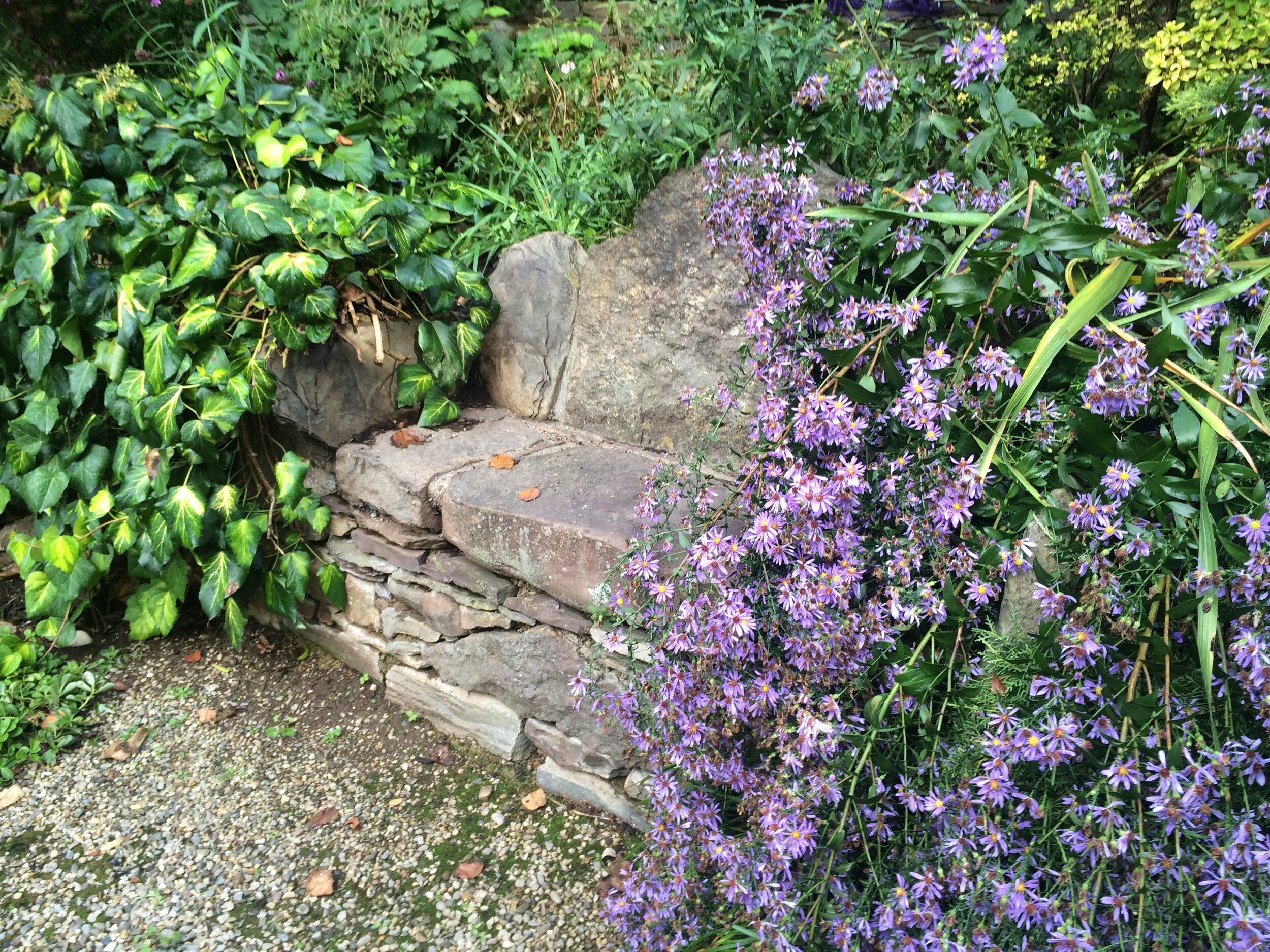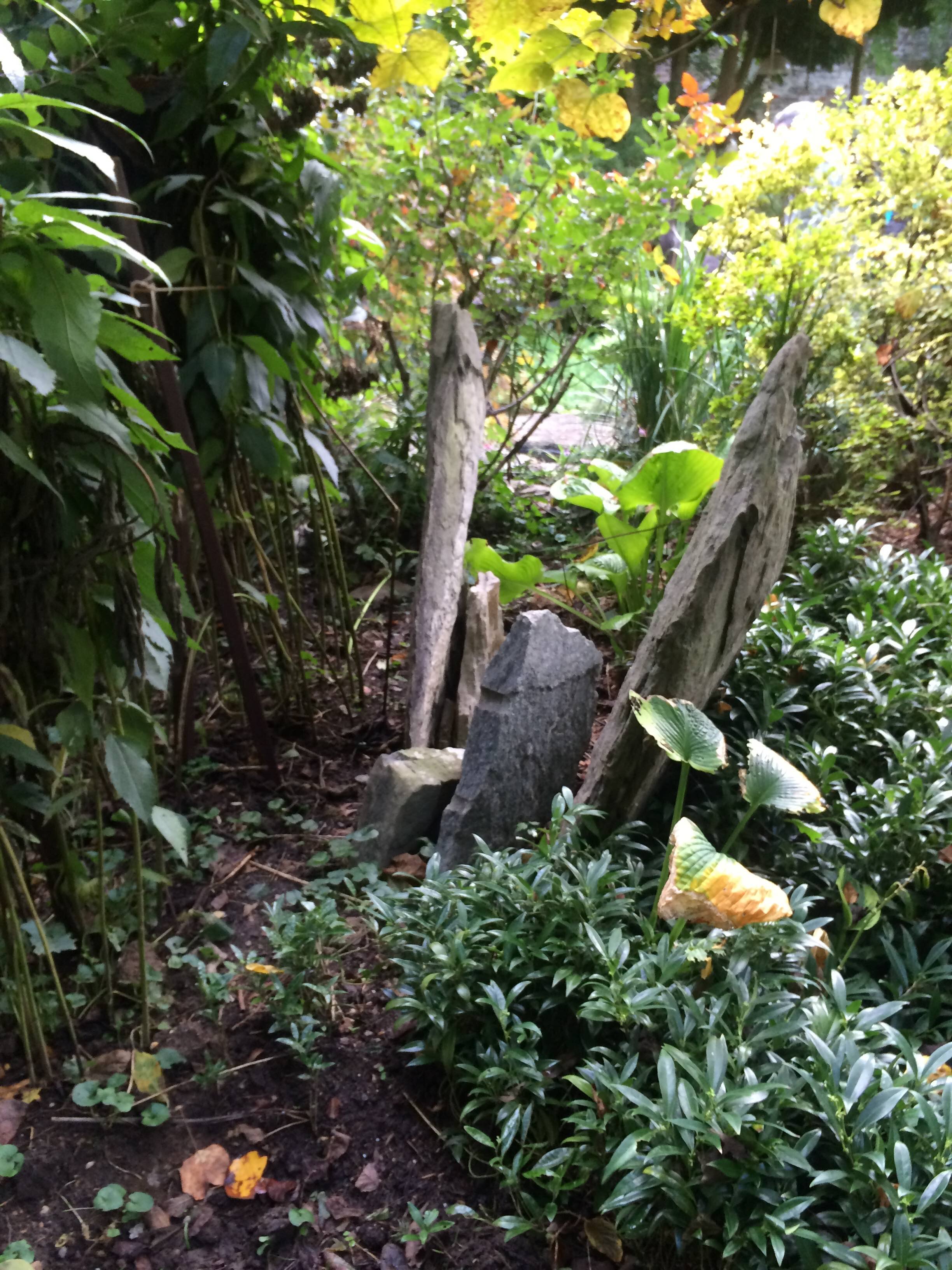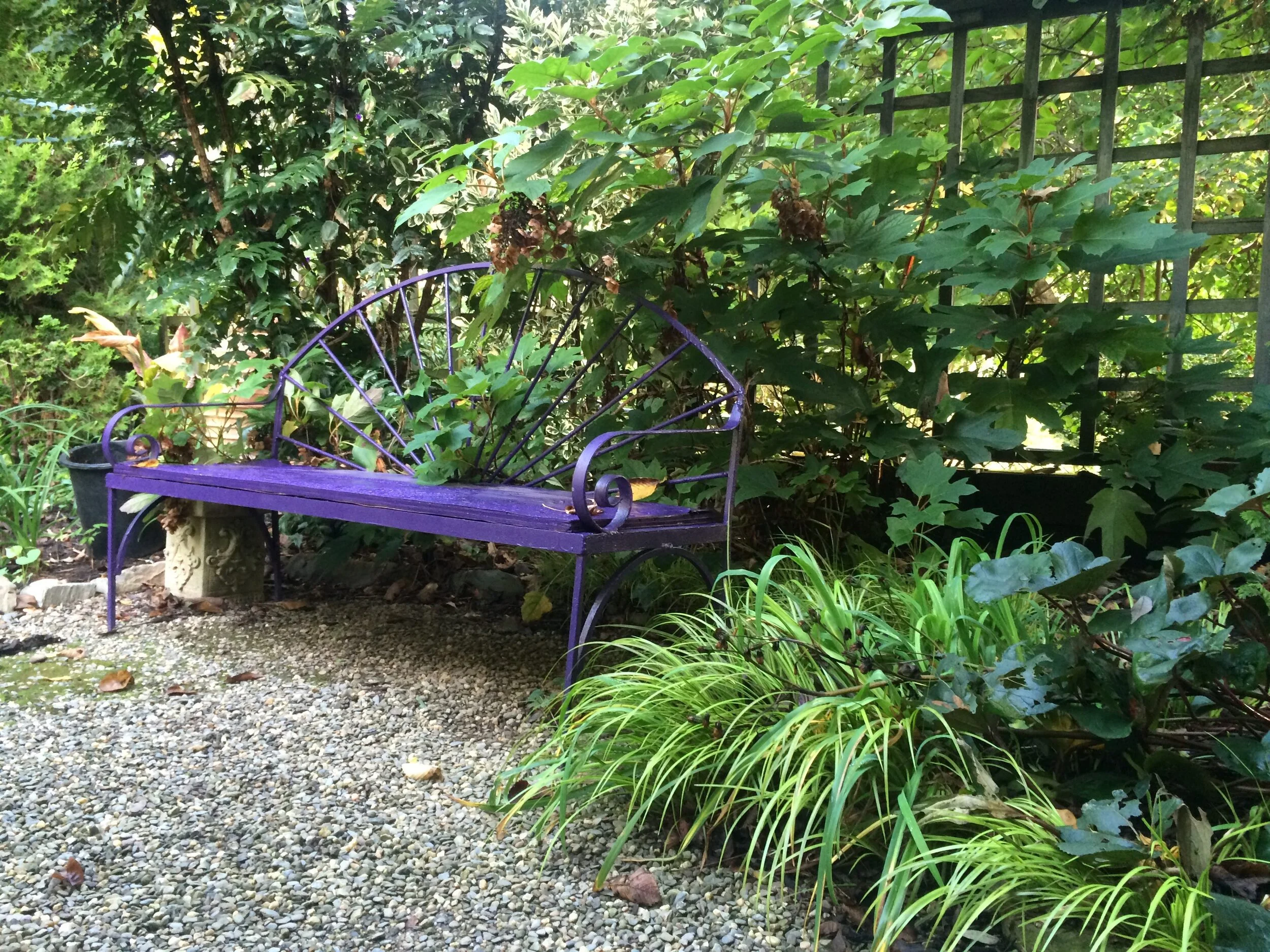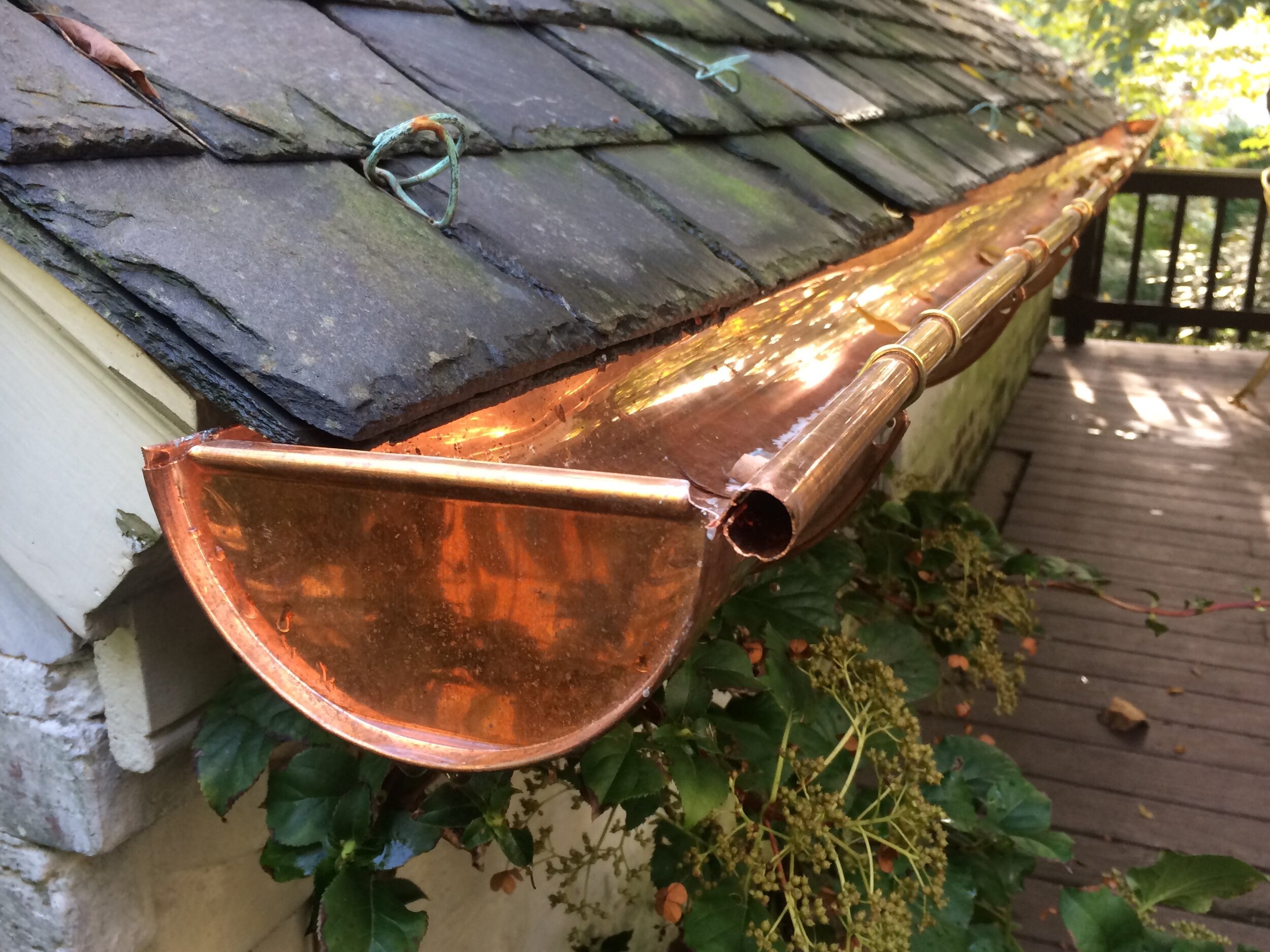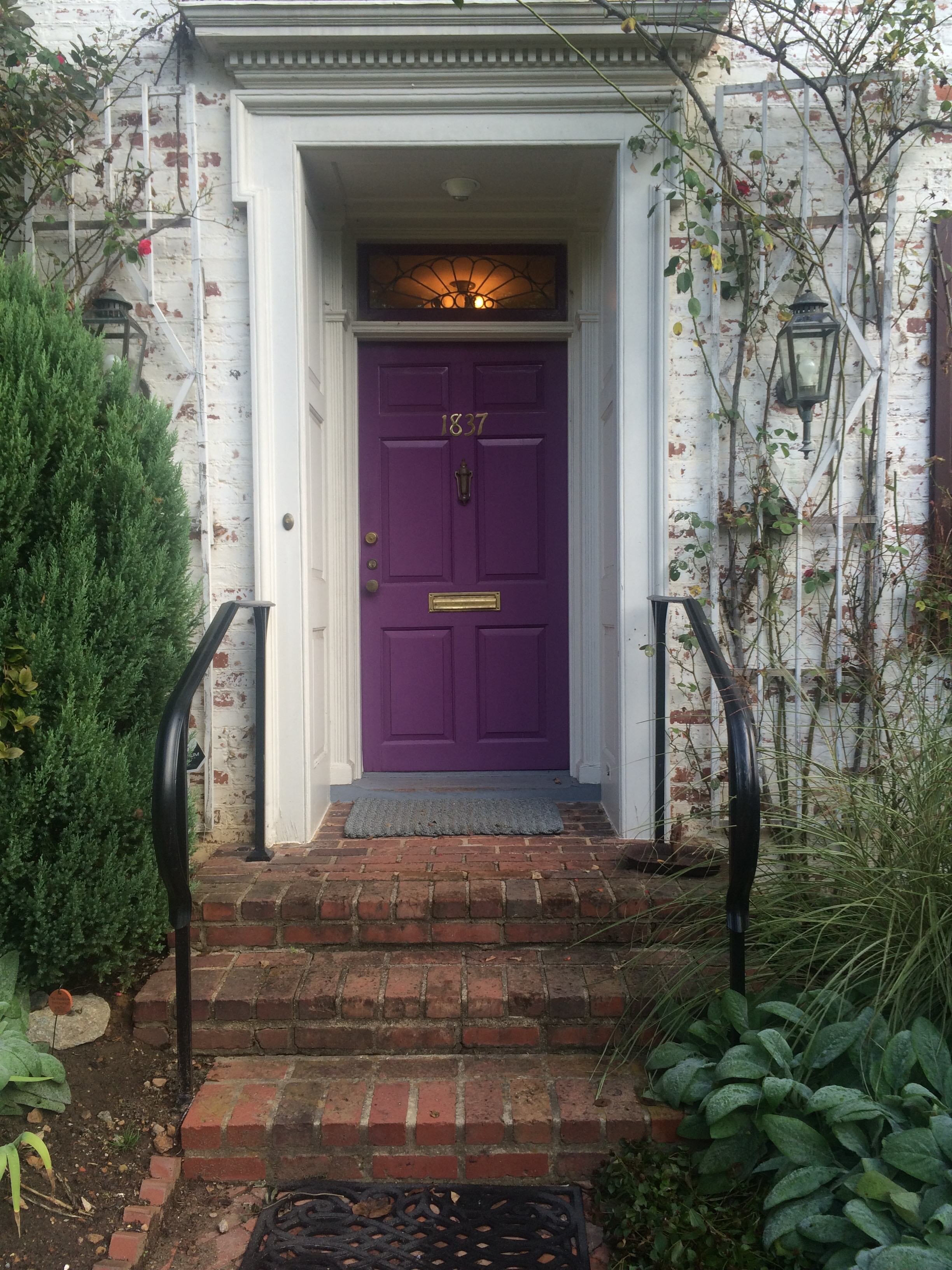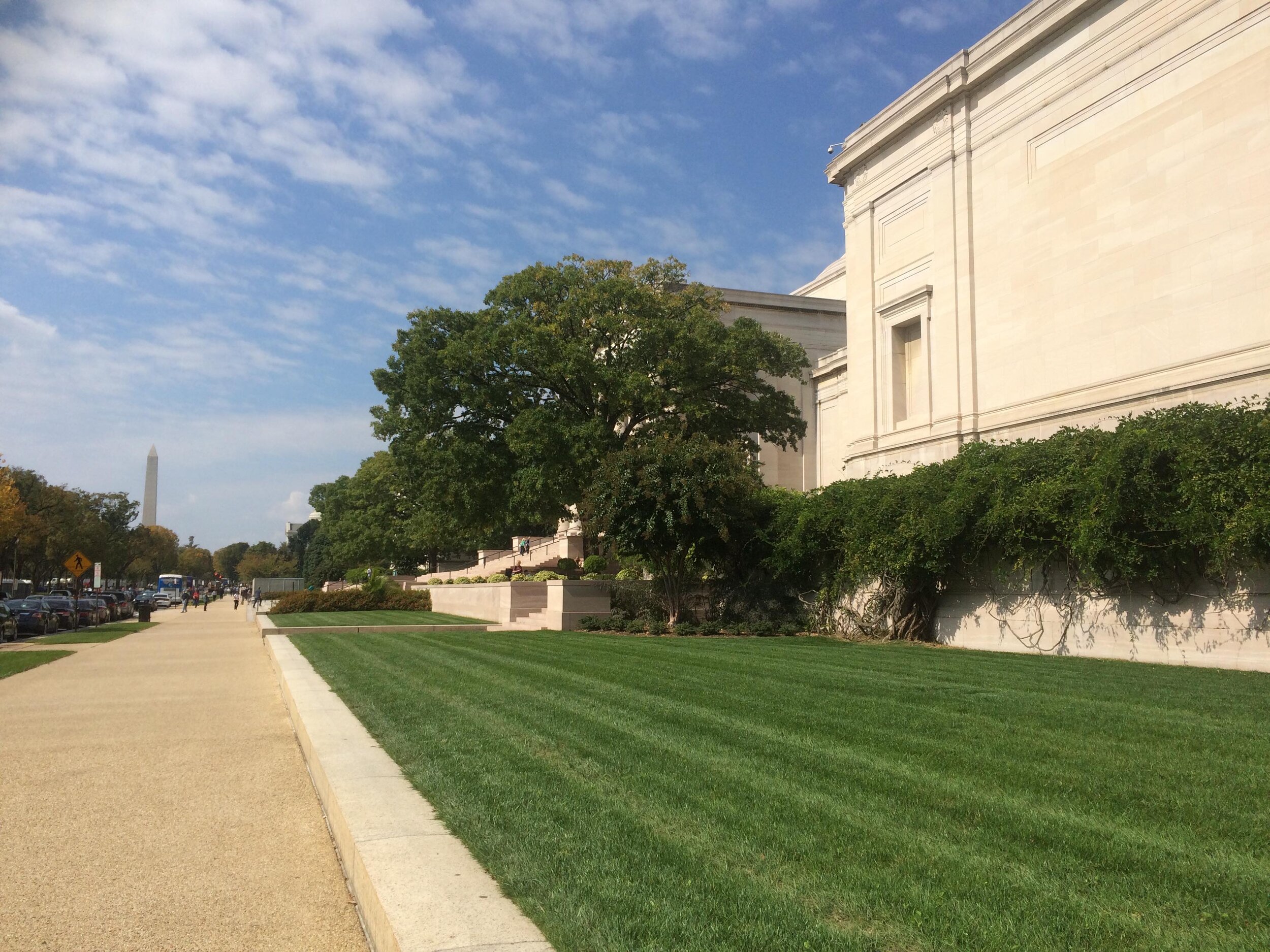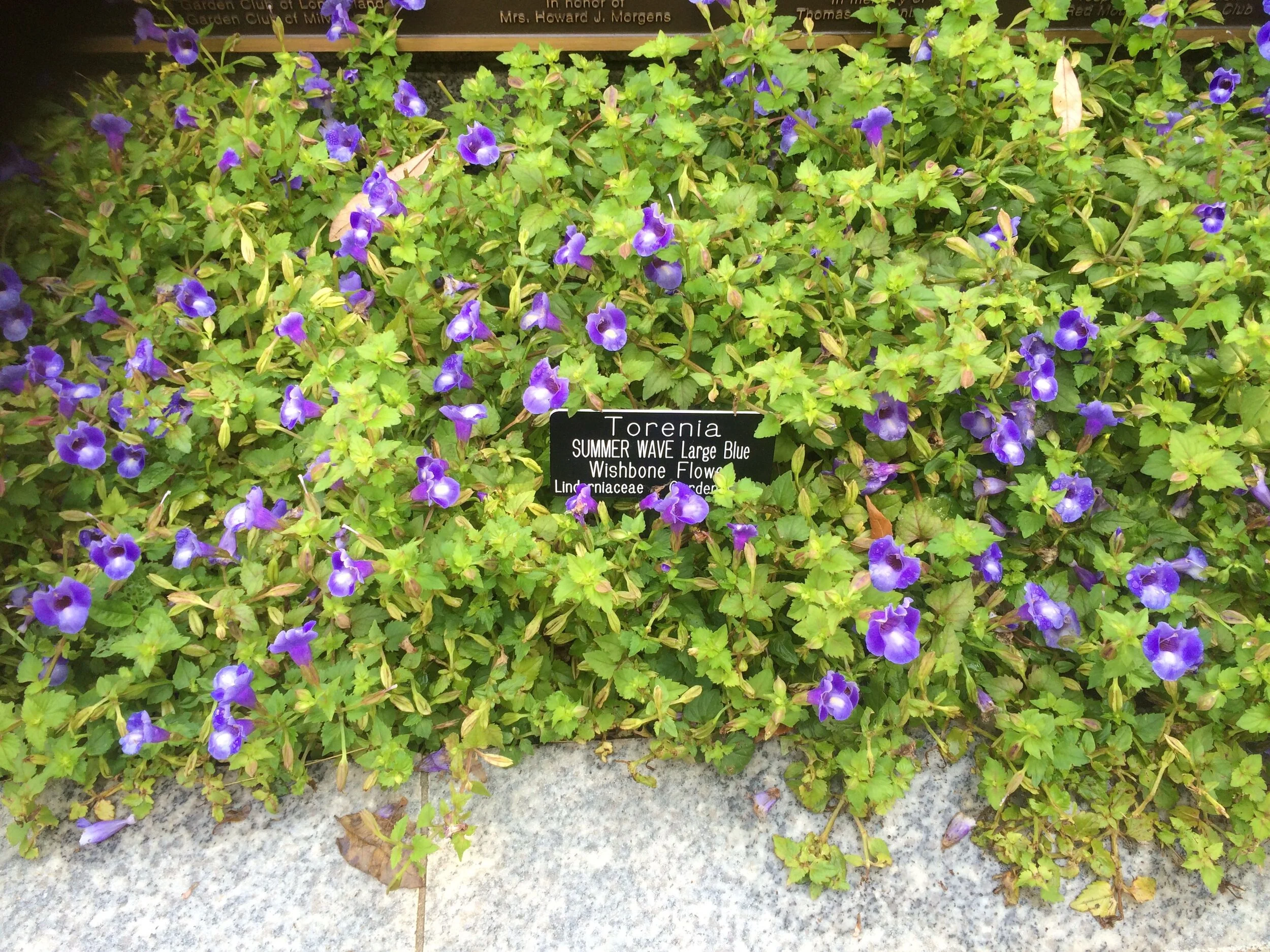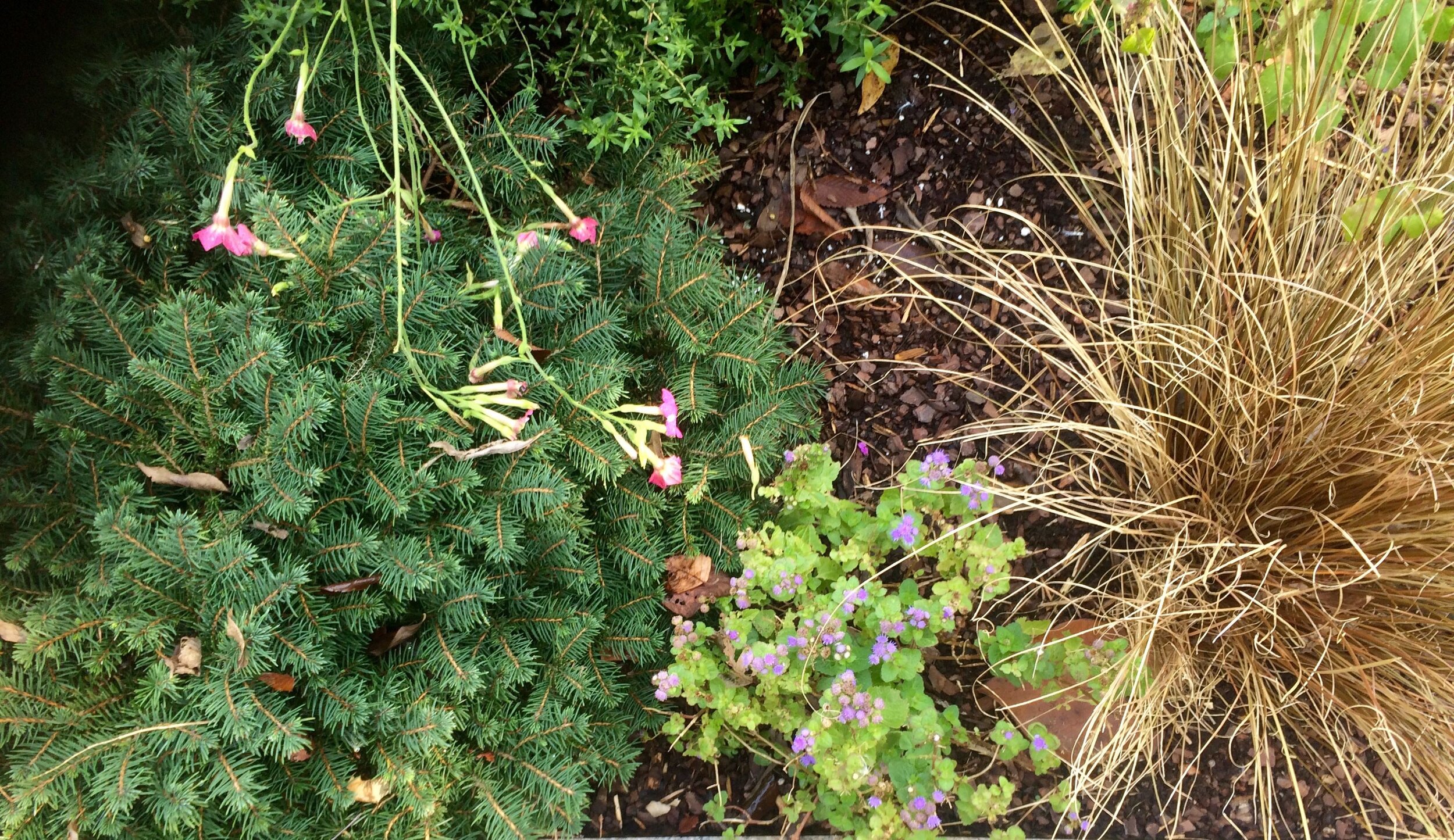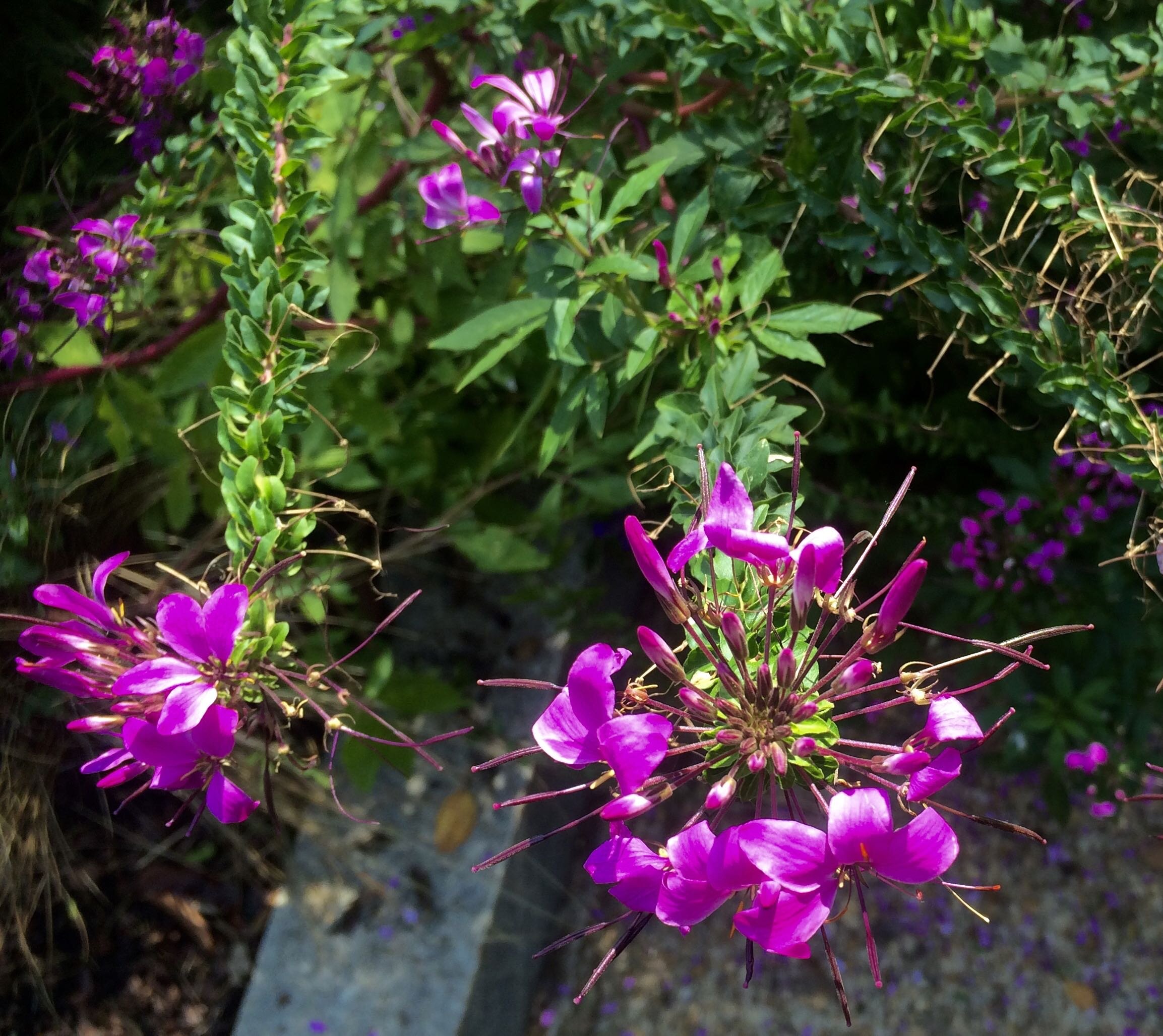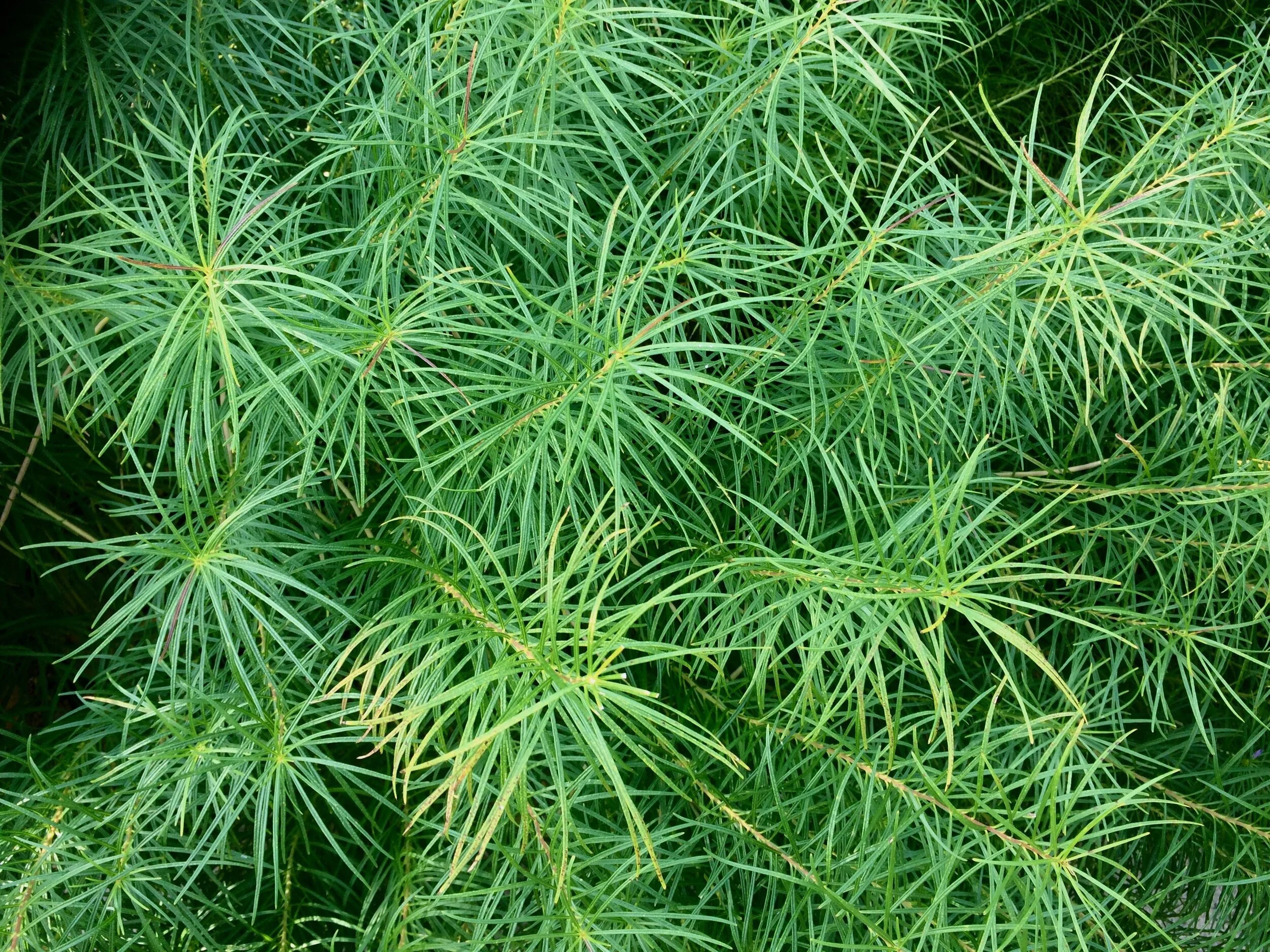I’m a big fan of the APLD International Design Conference. This year it was in San Diego and was delightful. Absolutely packed with amazing speakers, tours, and activities. Every year I swear I will take good notes and post in a timely manner before I have forgotten everything that happened. Every year I fail at that goal and this year is no different. I can see in my Notes App that I started to take notes but they are very bad and useless. So here we are once again posting vaguely but with lots of lovely pictures. :)
I posted last week about Easyscape so I thought I would at least get out a post about touring the home garden of Dennis Mudd the founder of Calscape and Easyscape. you can watch Dennis give a presentation about his landscape here: https://www.youtube.com/watch?v=eilqQPUr3a4
Some entryway photos. the cool thing about this circular drive was that it is also a dry creek. One area is built so that it floods when it rains and it slows and directs the water to the landscape and allows the water to percolate back into the earth.
Dennis and his wife also were generous enough to open their house to us as well. I’ll just post a few pics of some details in the walls and flooring… and the dog, of course.
Some plant and hardscape pics:
They filled in their pool to create a lovely pond water feature.
The outdoor kitchen and dining area had amazing vines climbing through the willow - I believe a grape and a (non native)trumpet vine - covering the entire area. It was so lovely and I can imagine sitting under it eating your wood fired pizza must be amazing.
a delightful approach to a gate.

